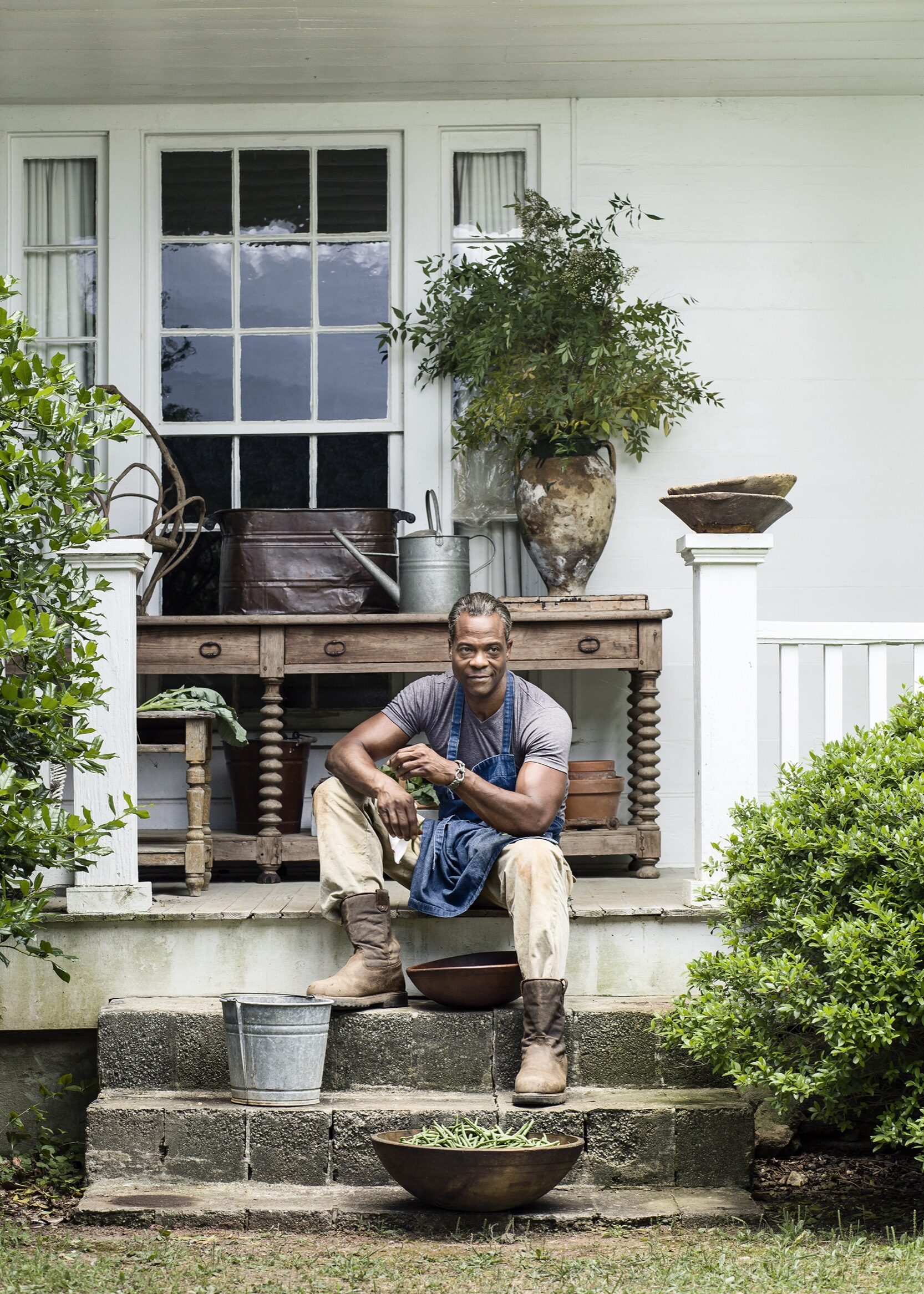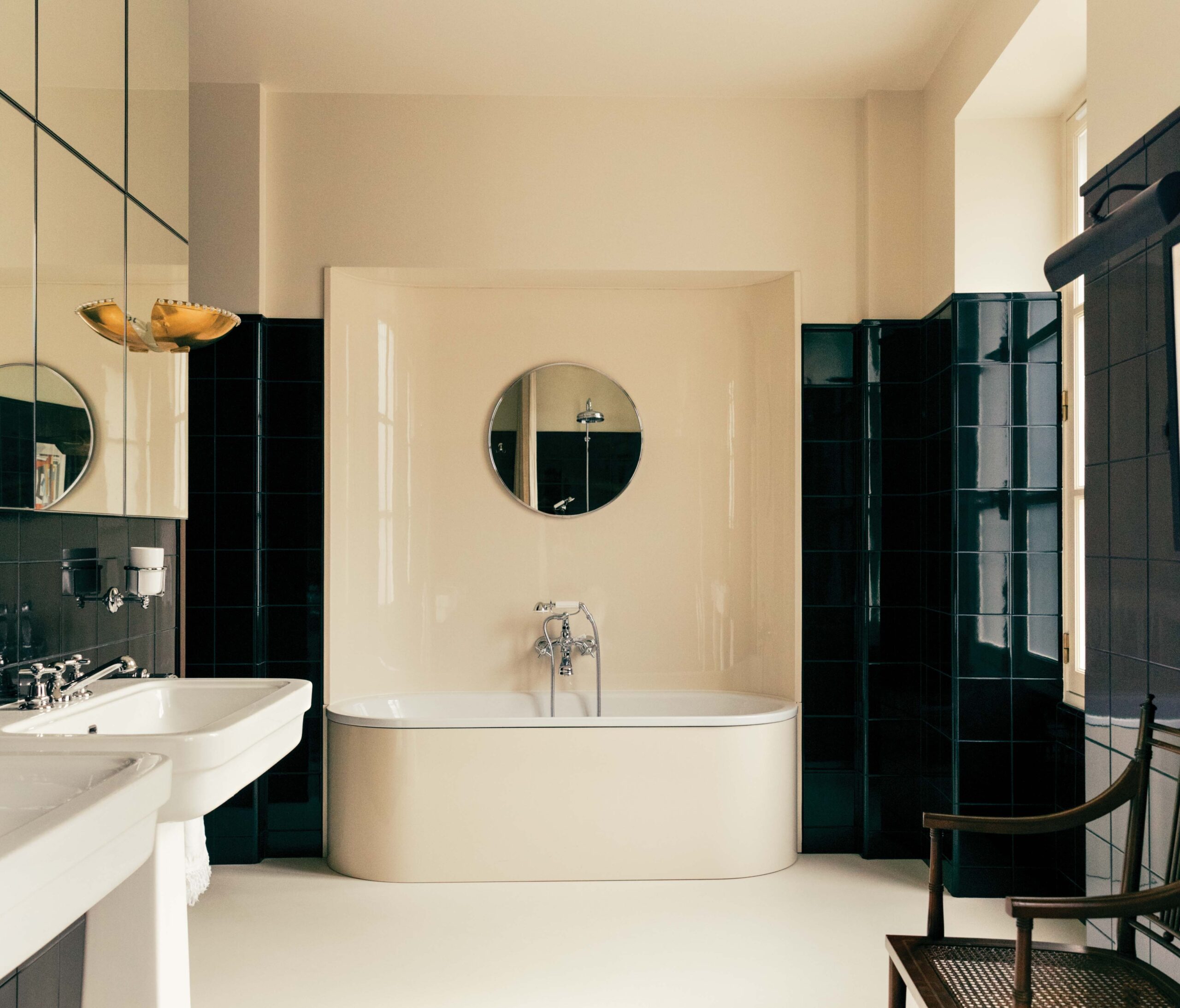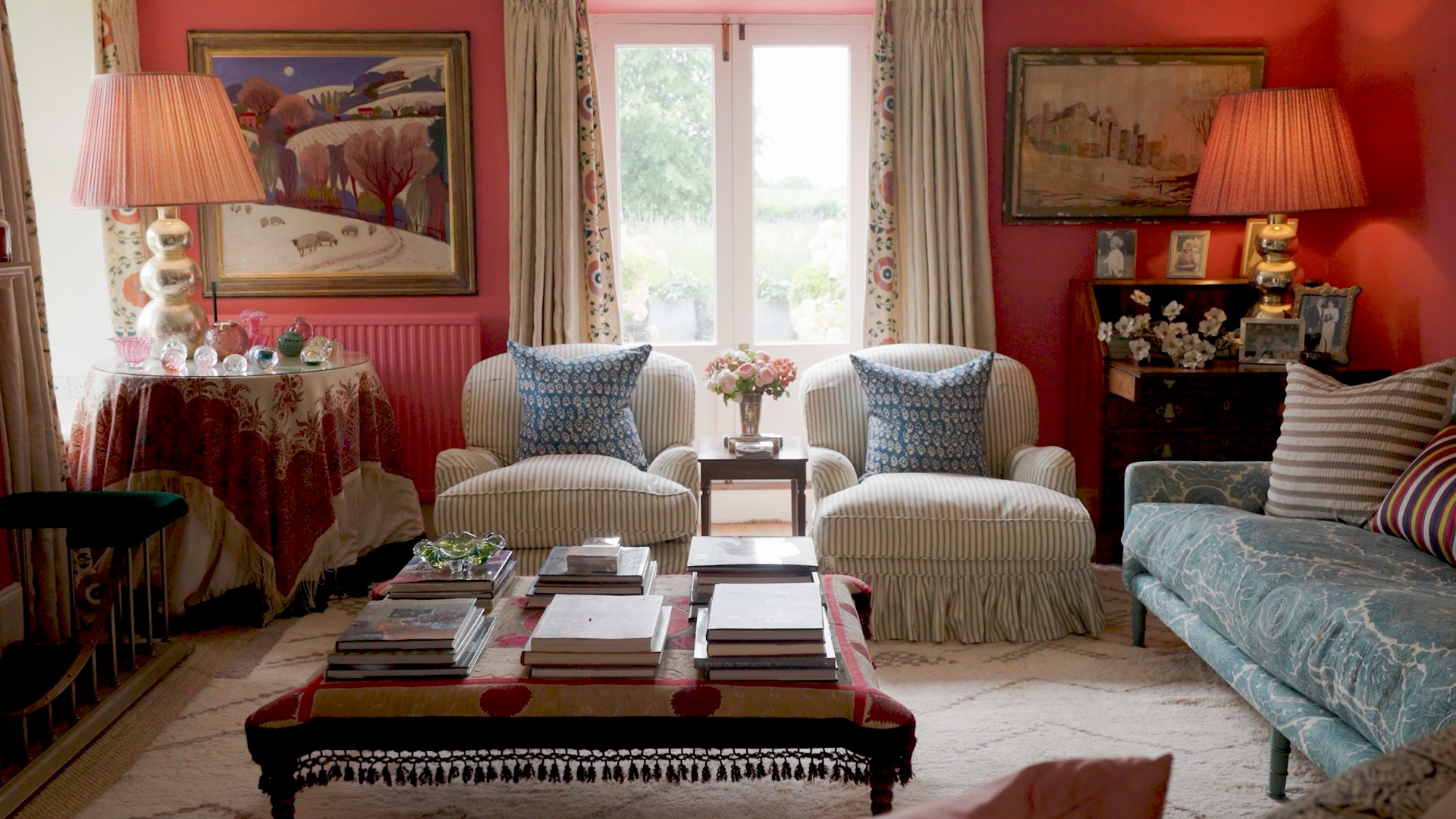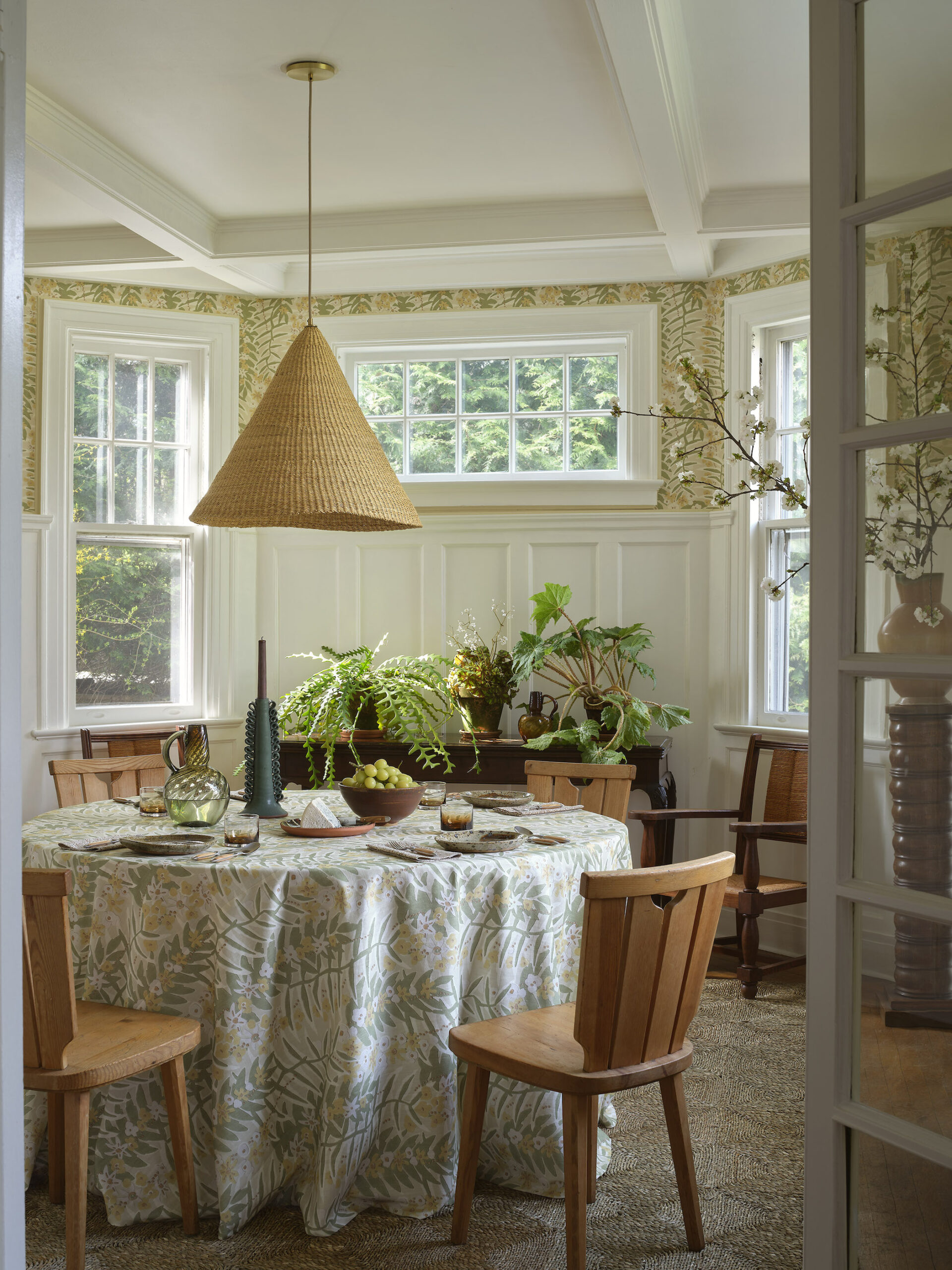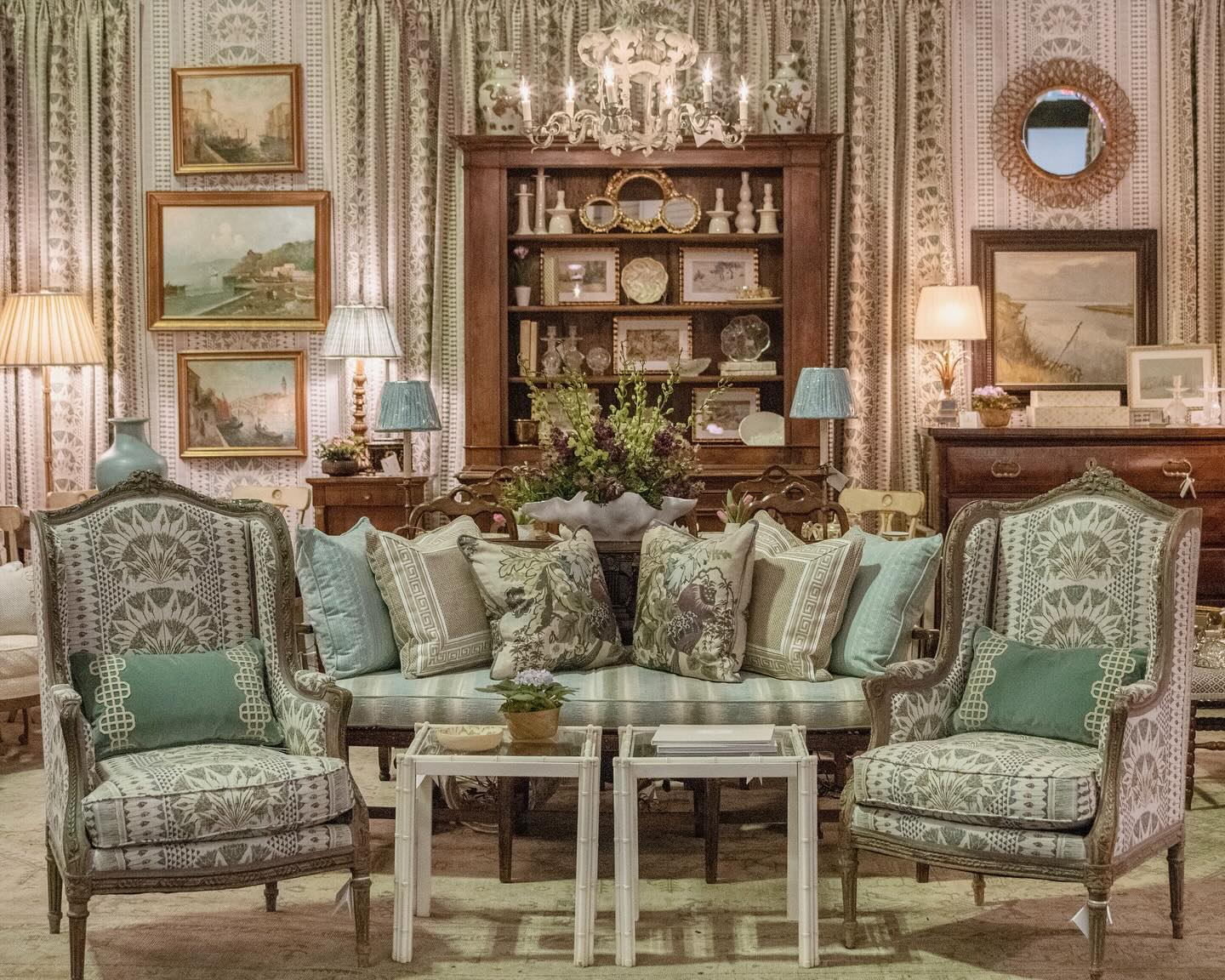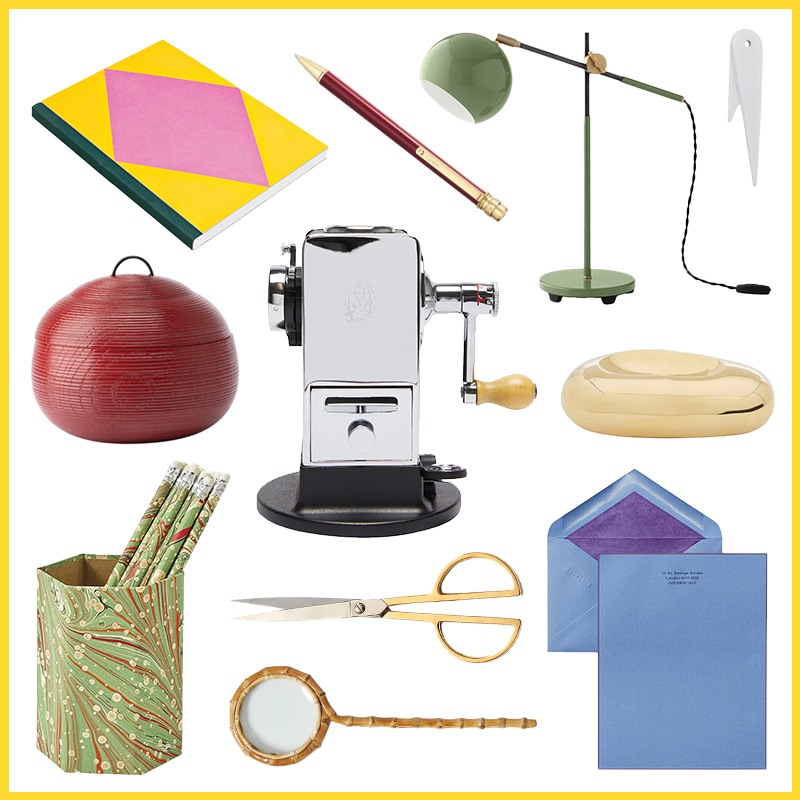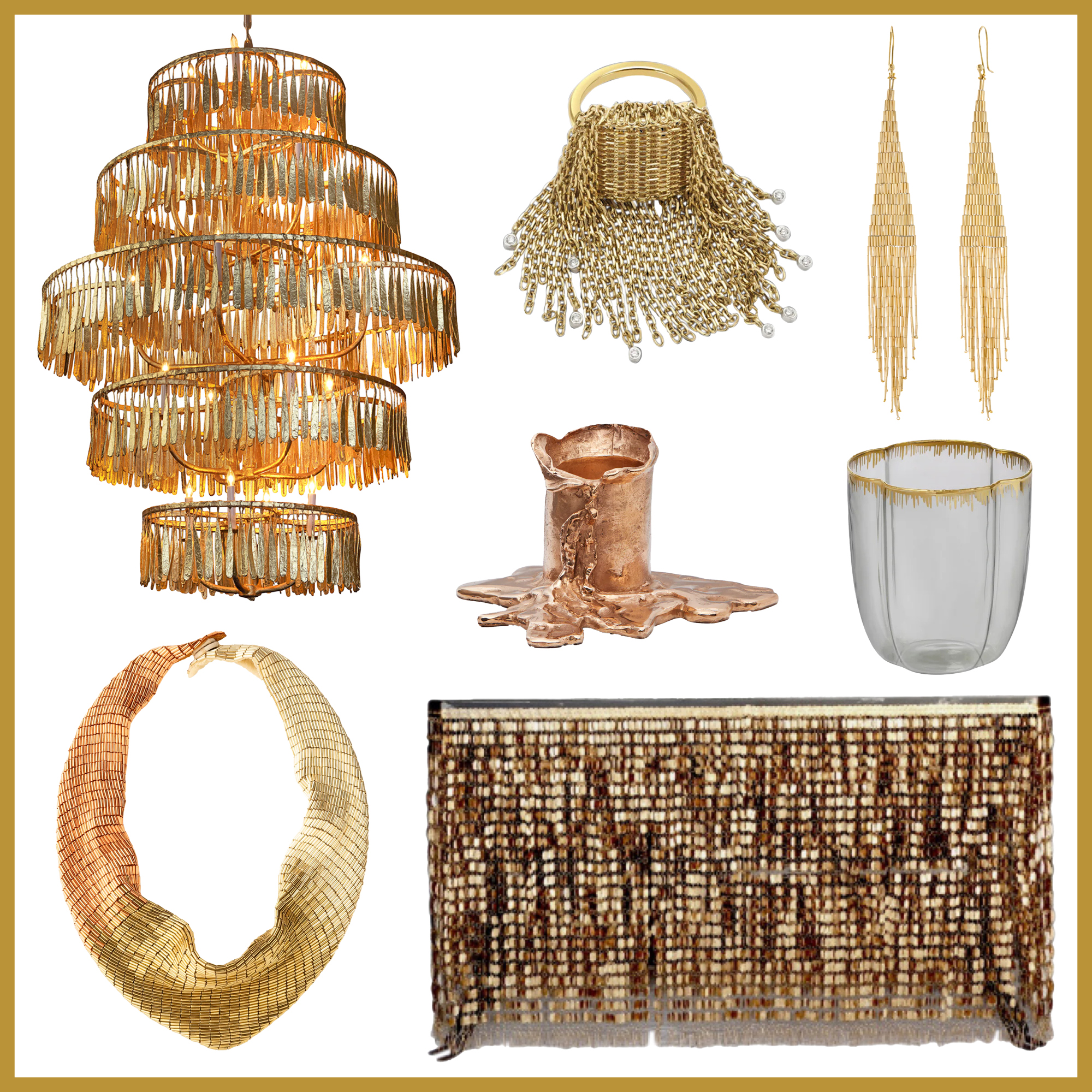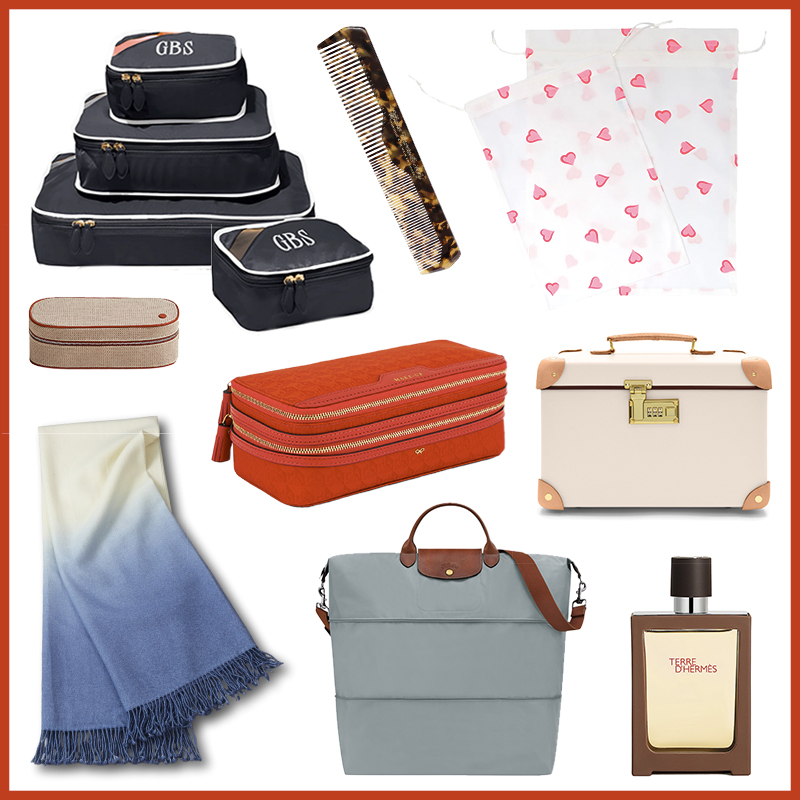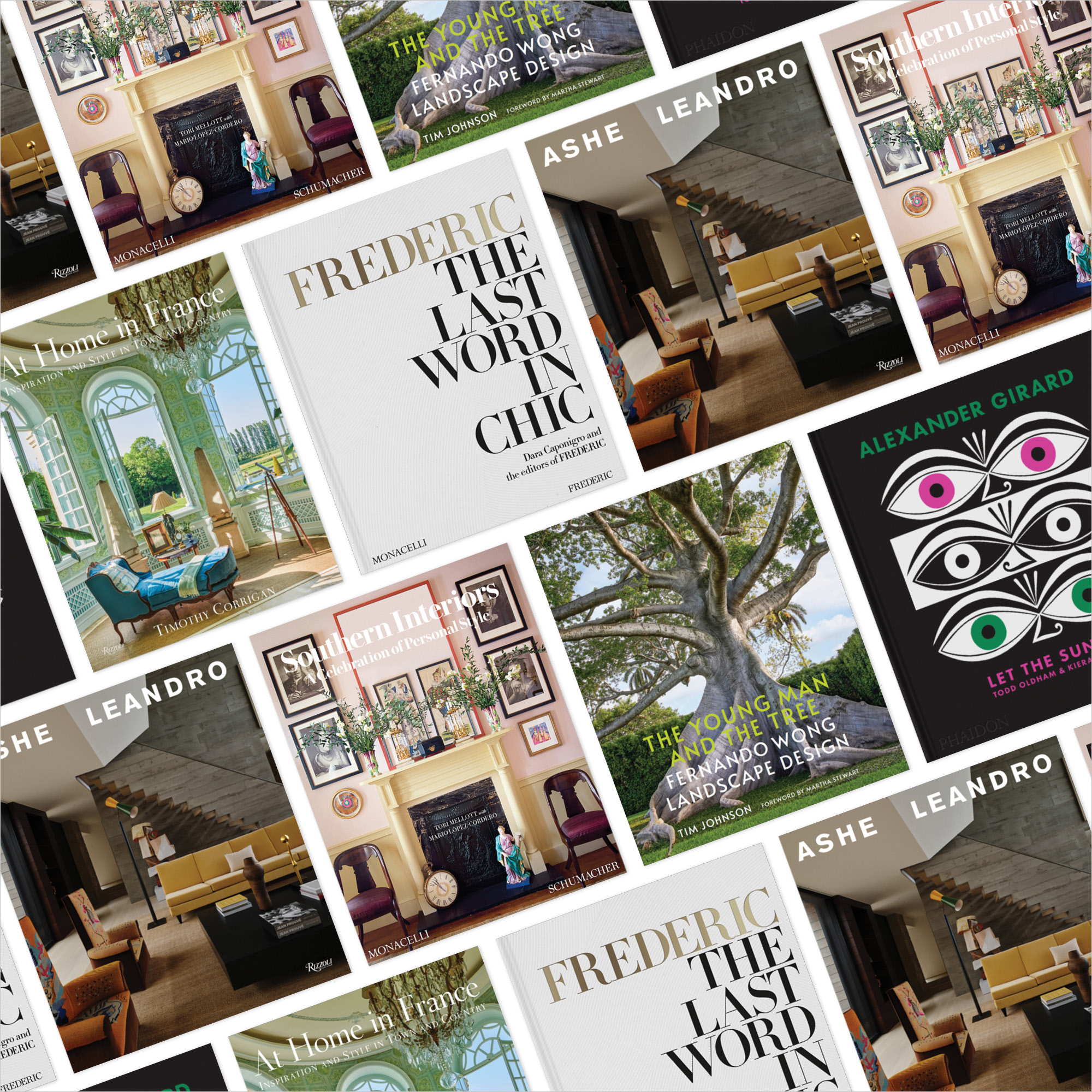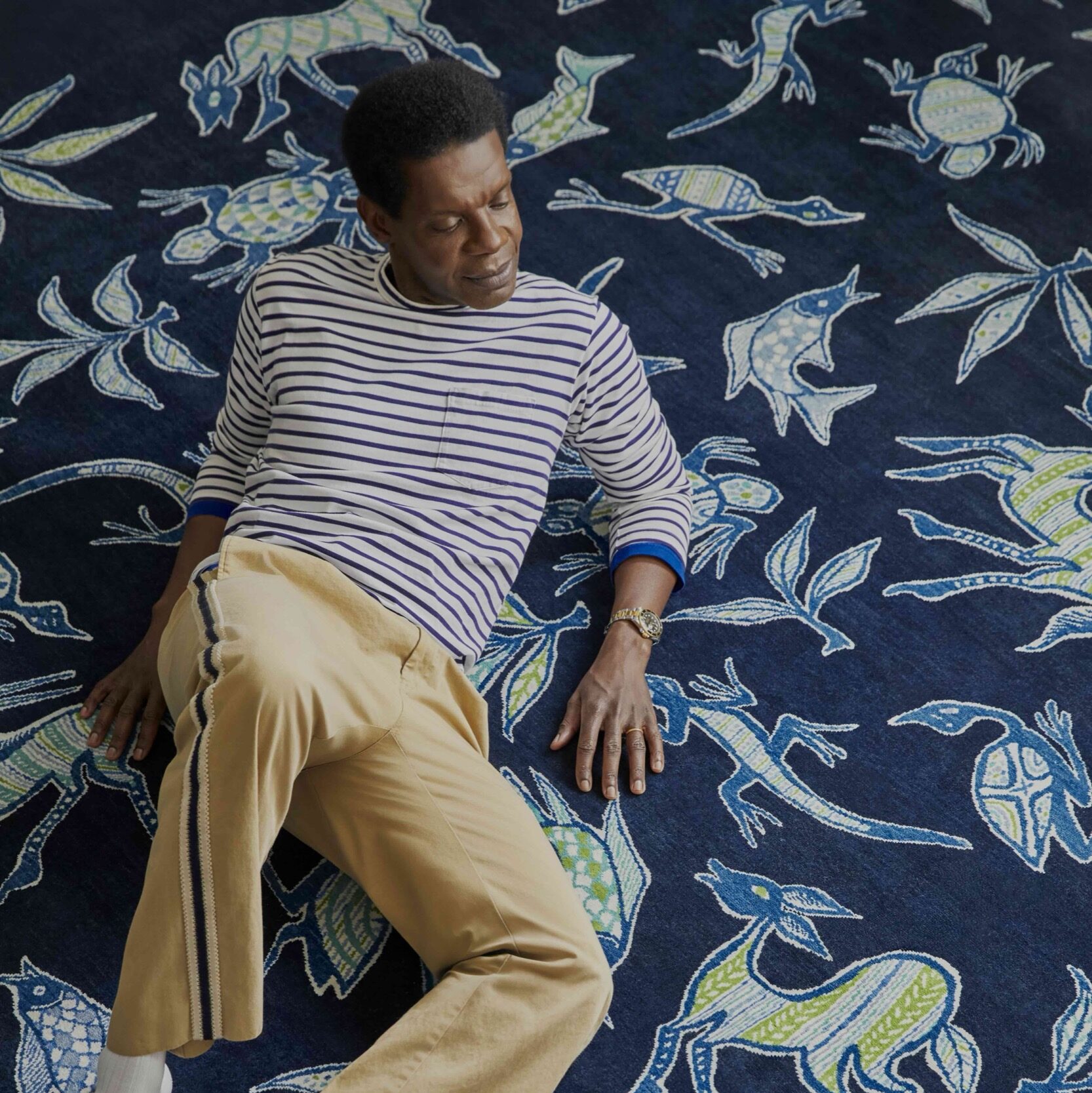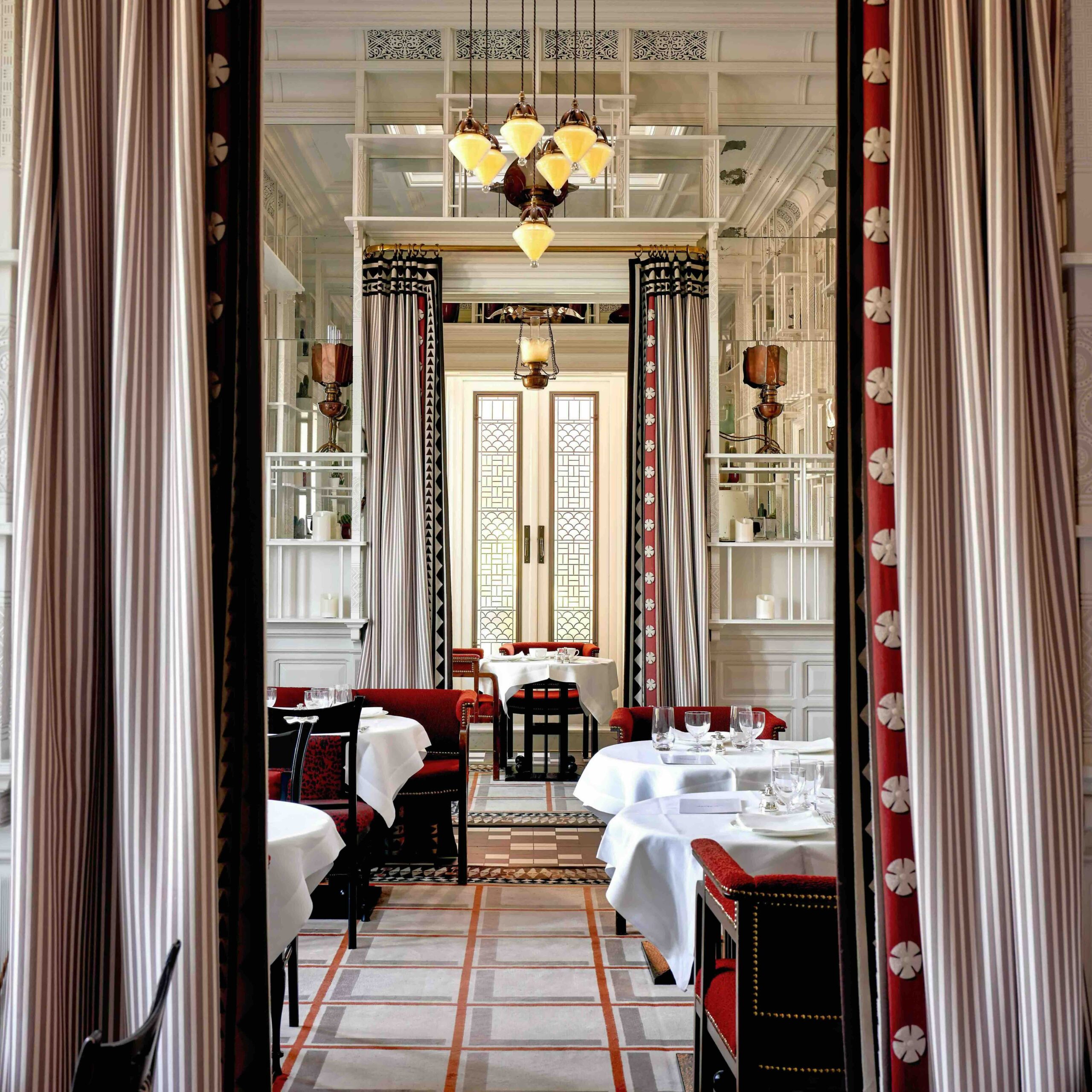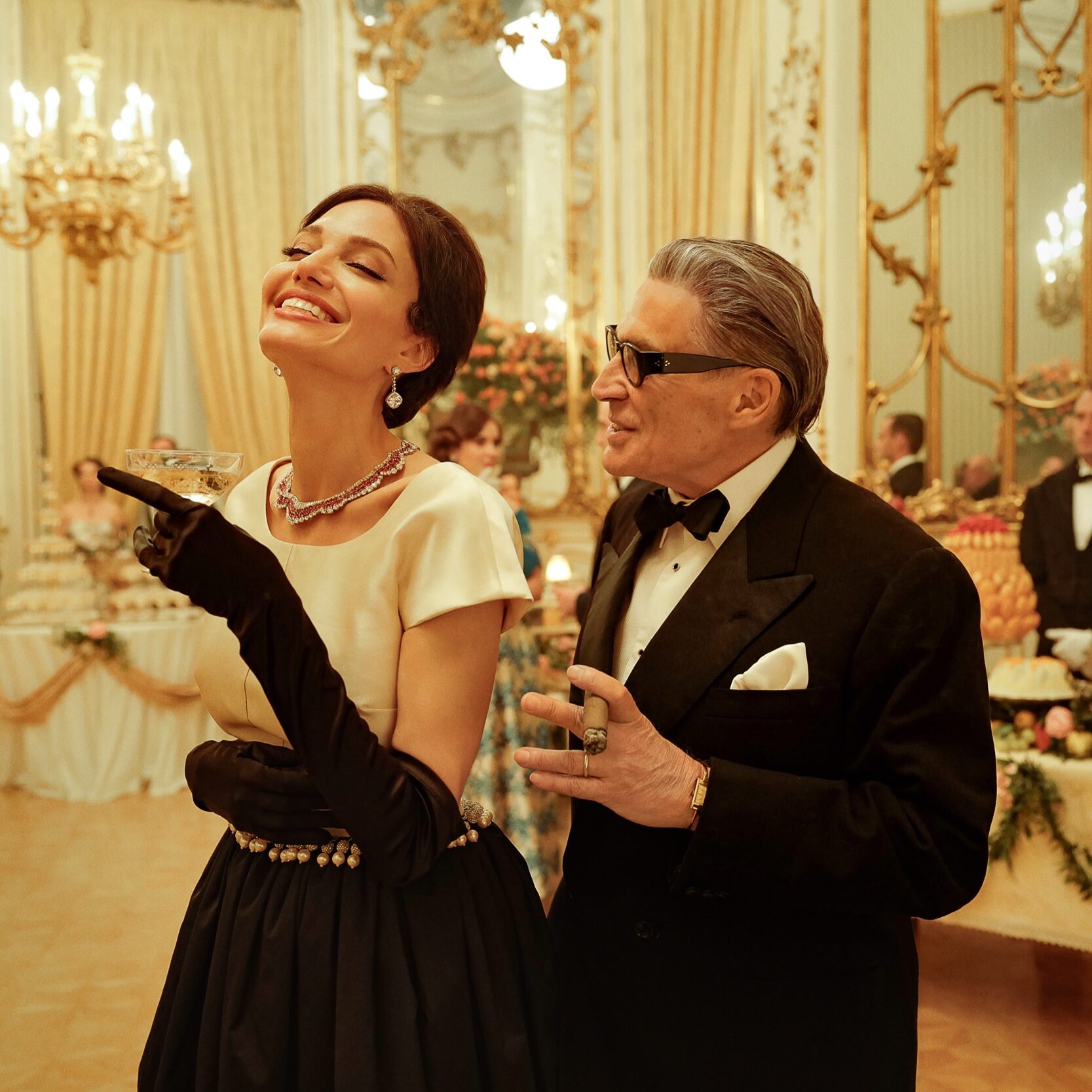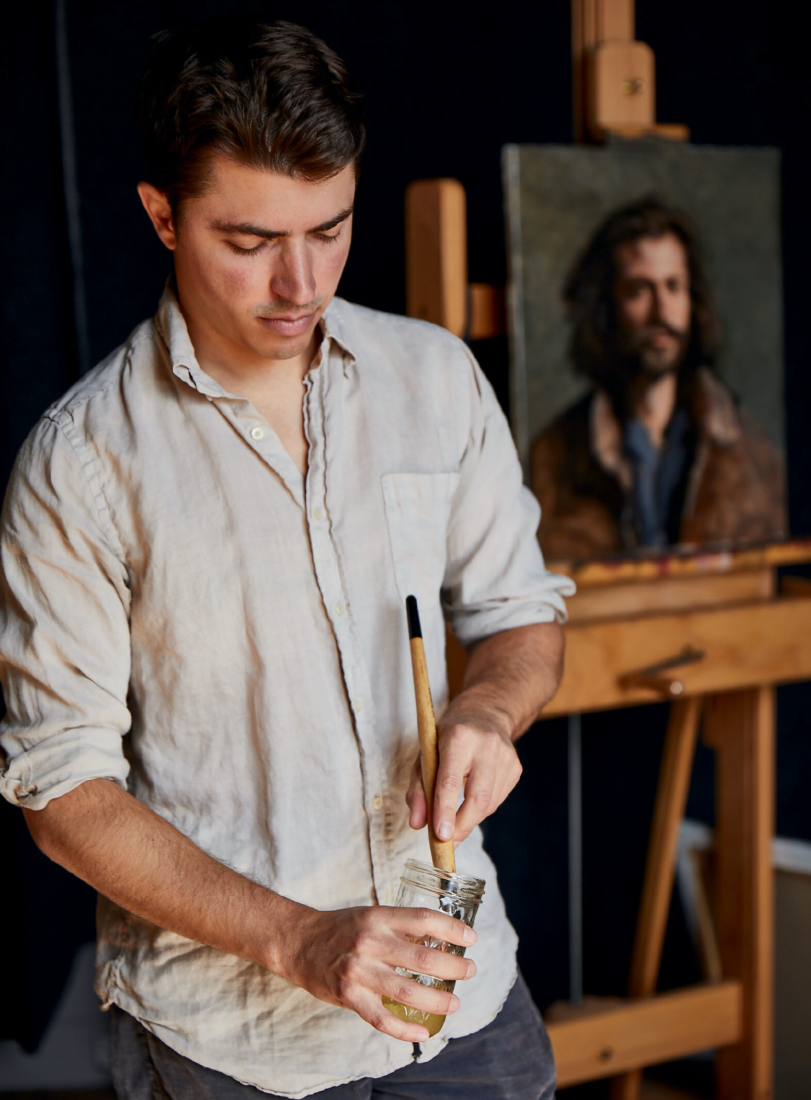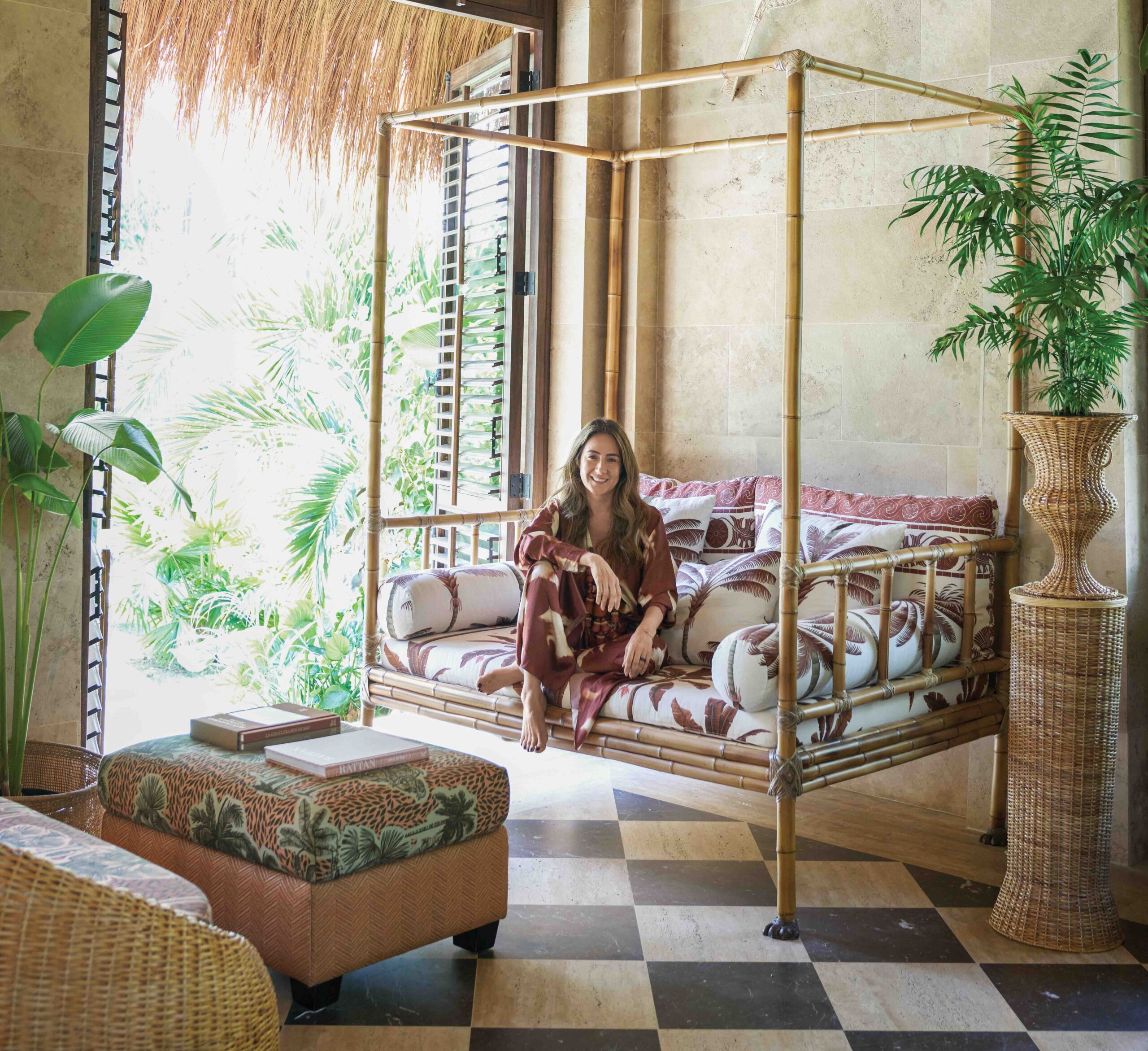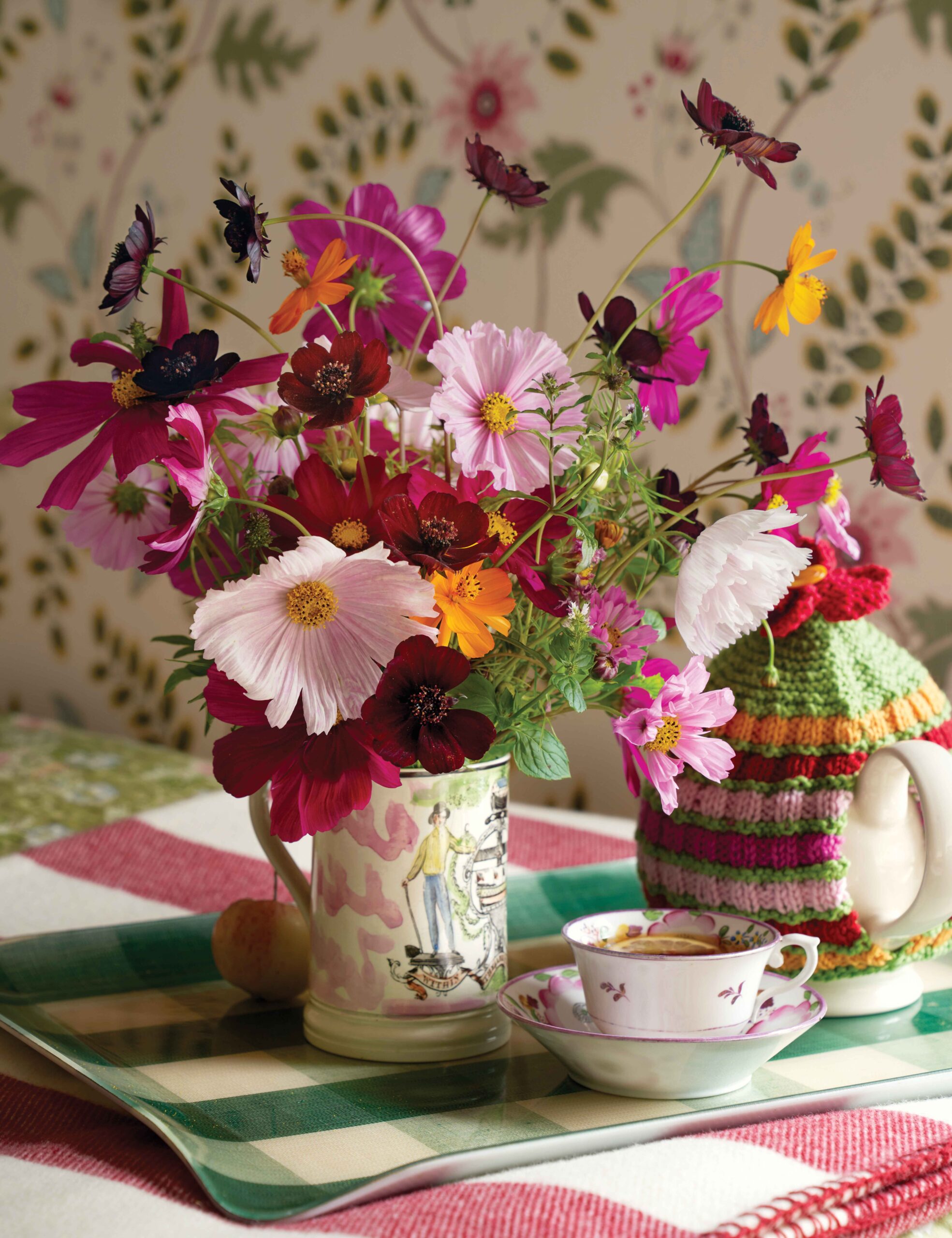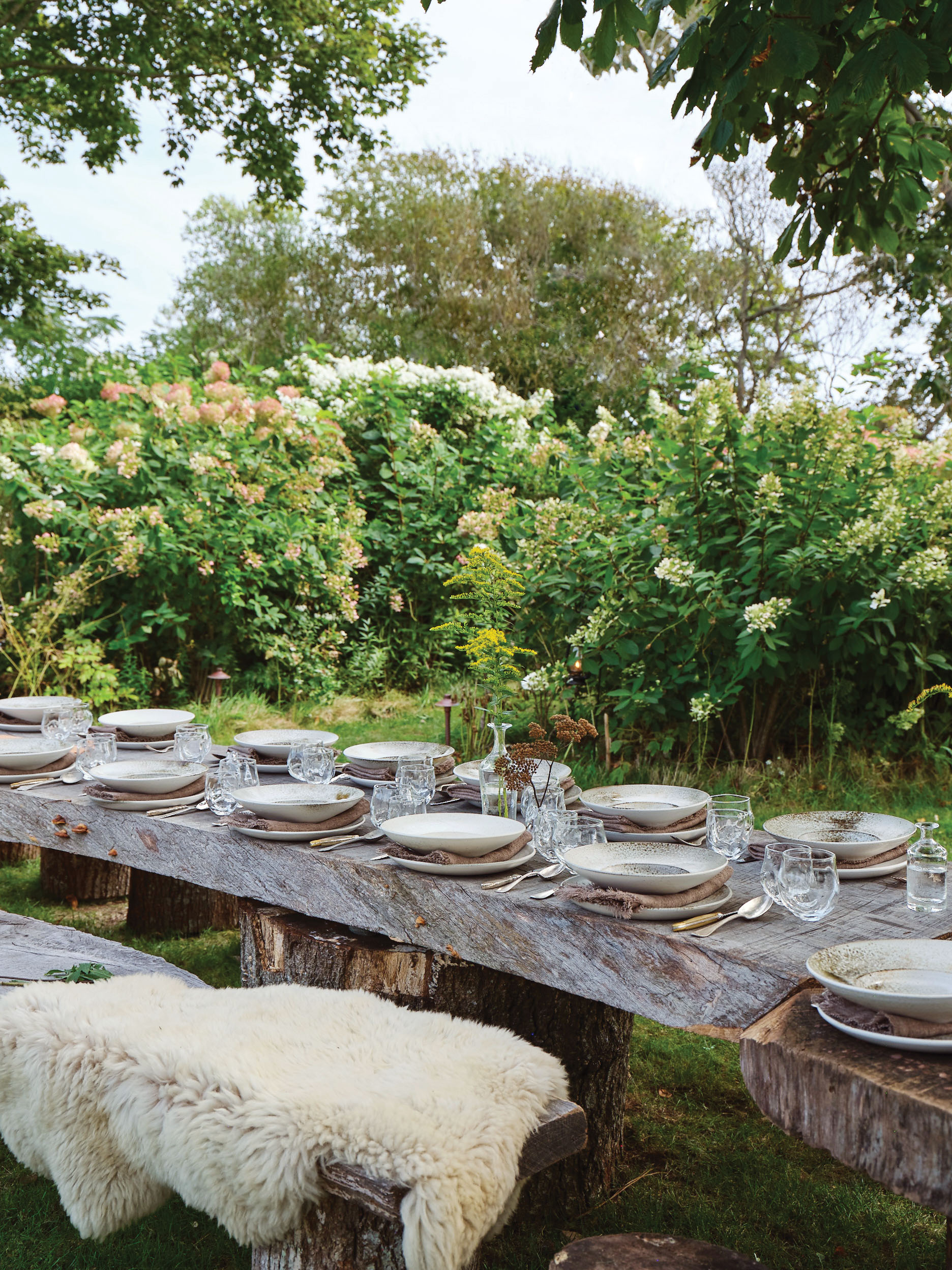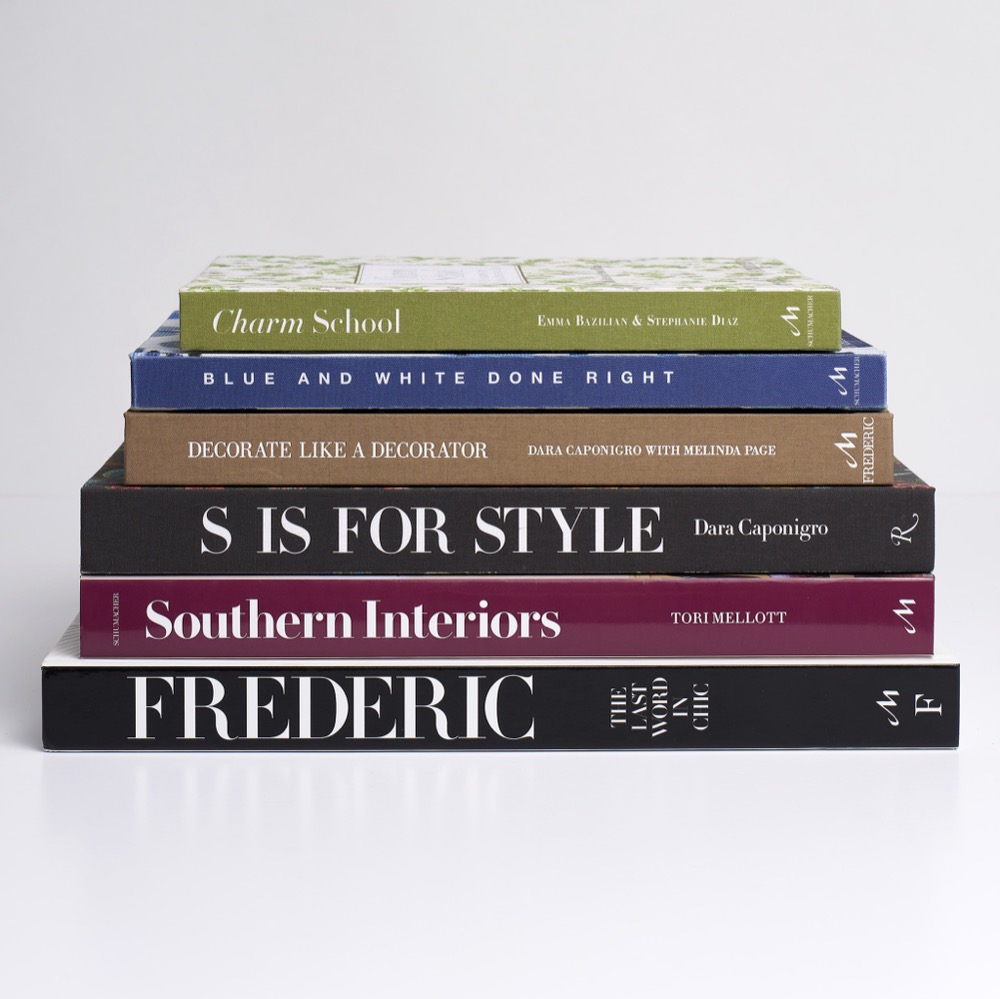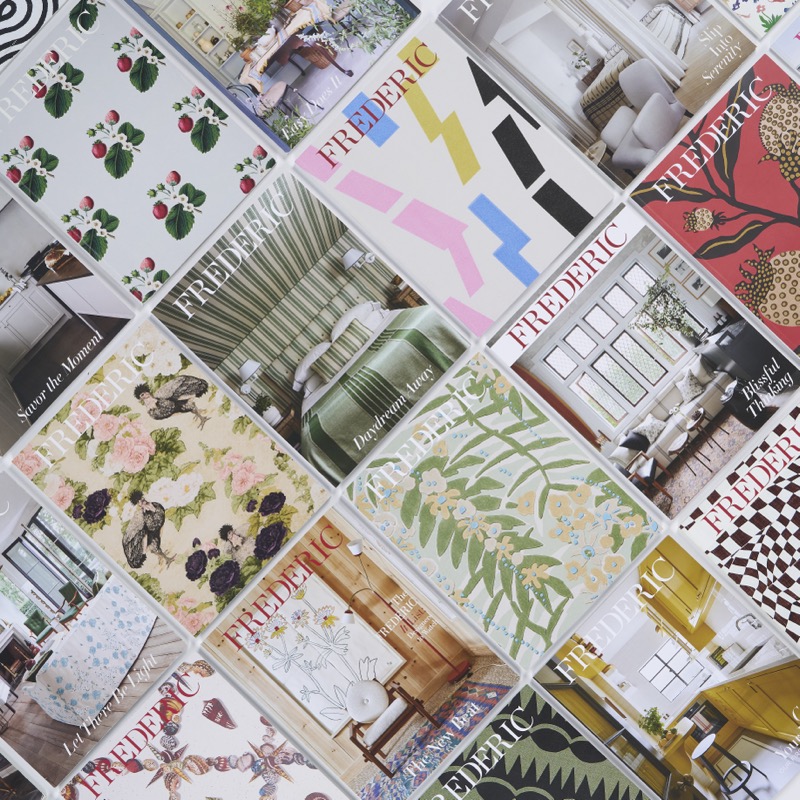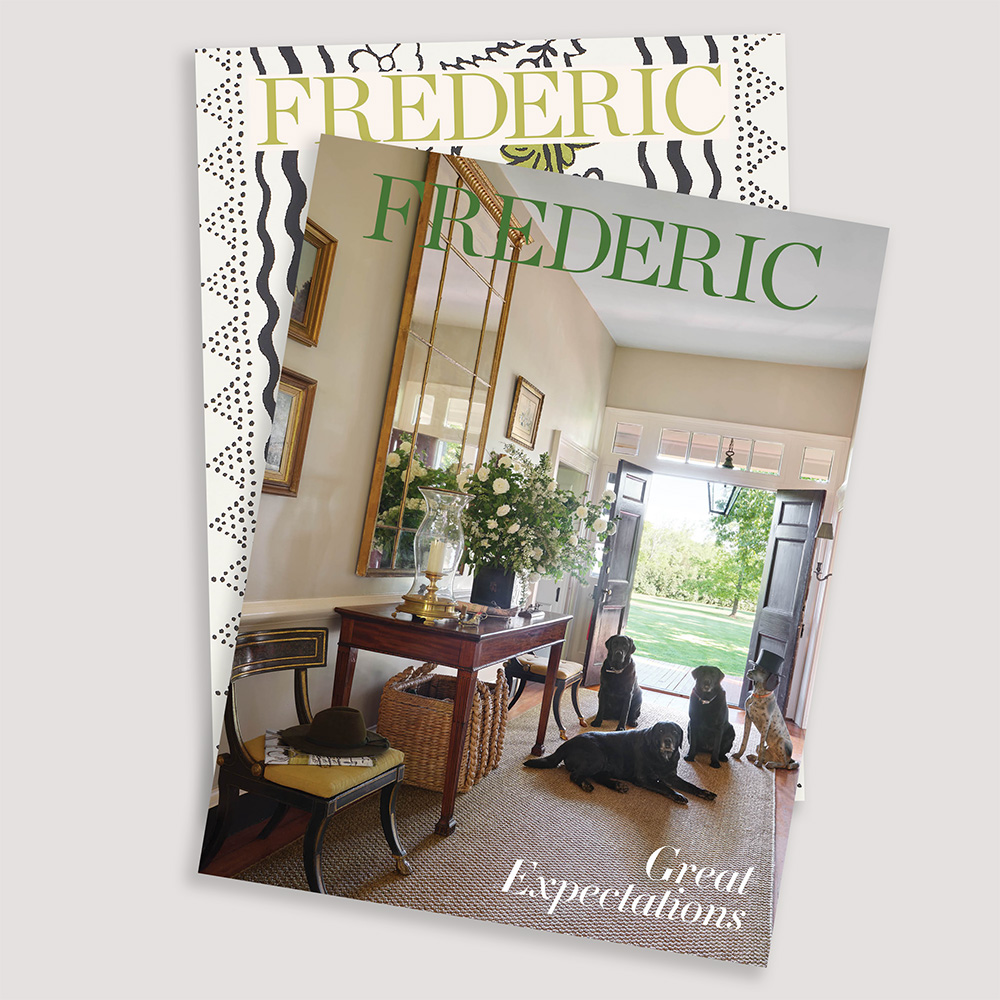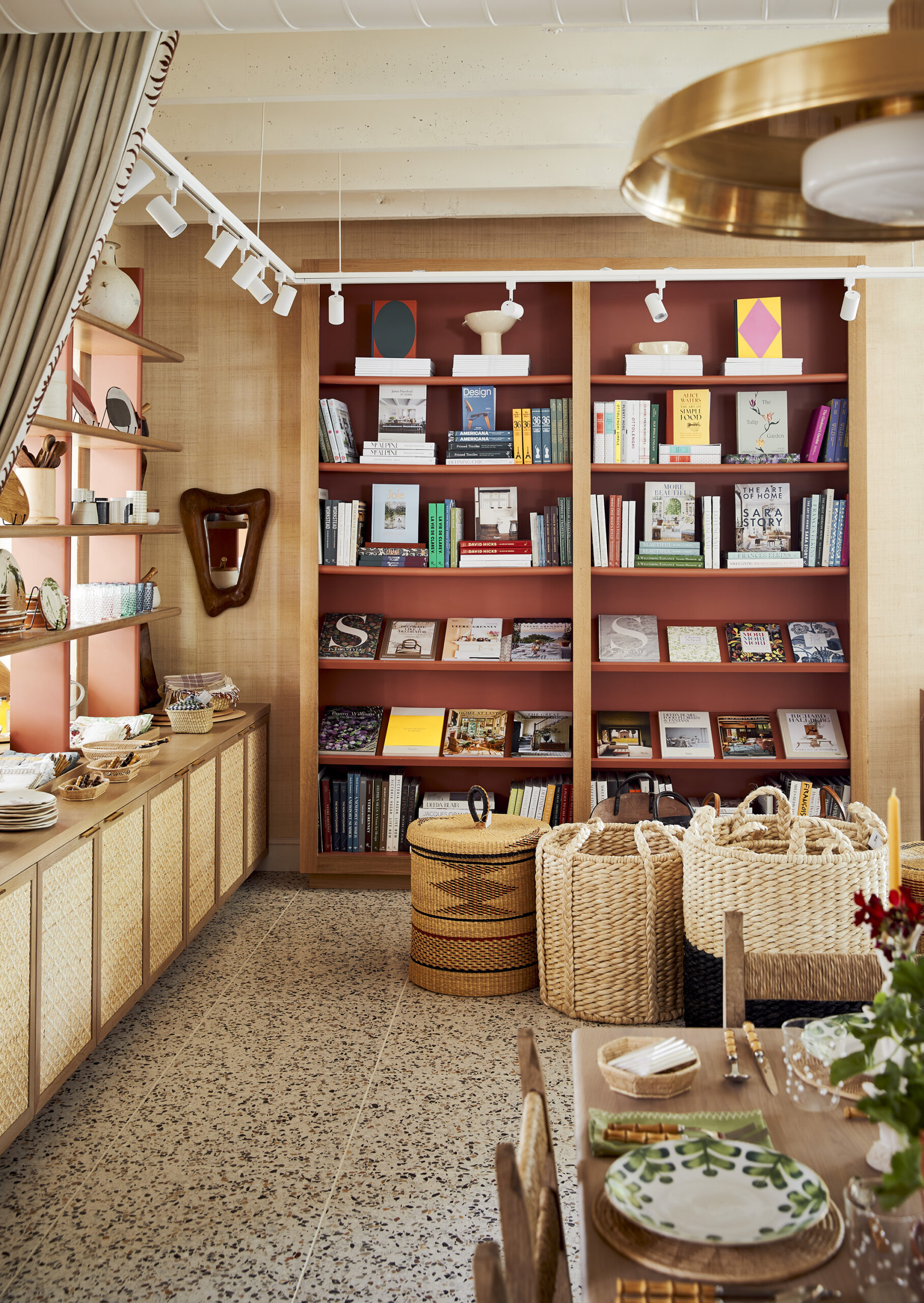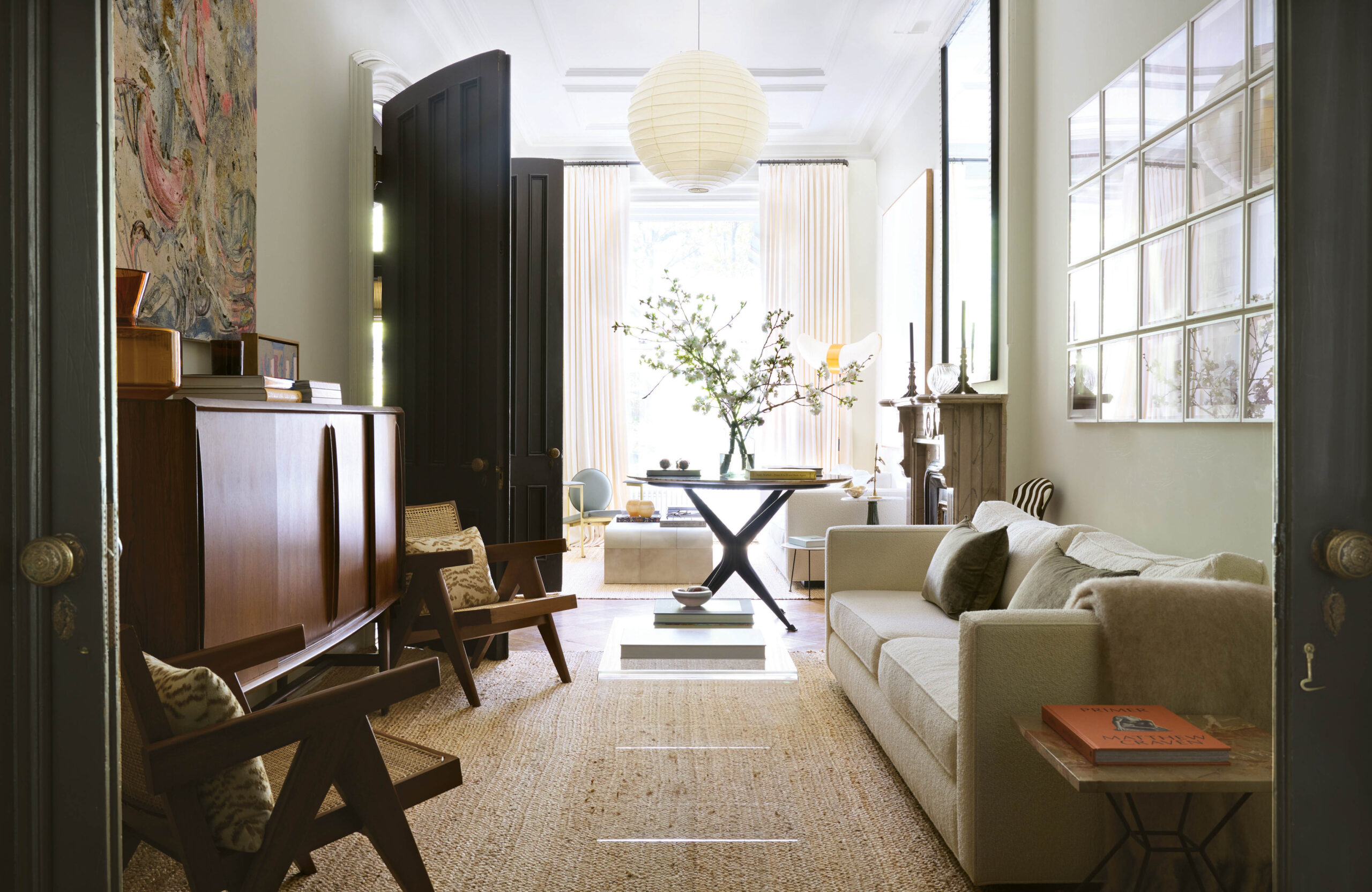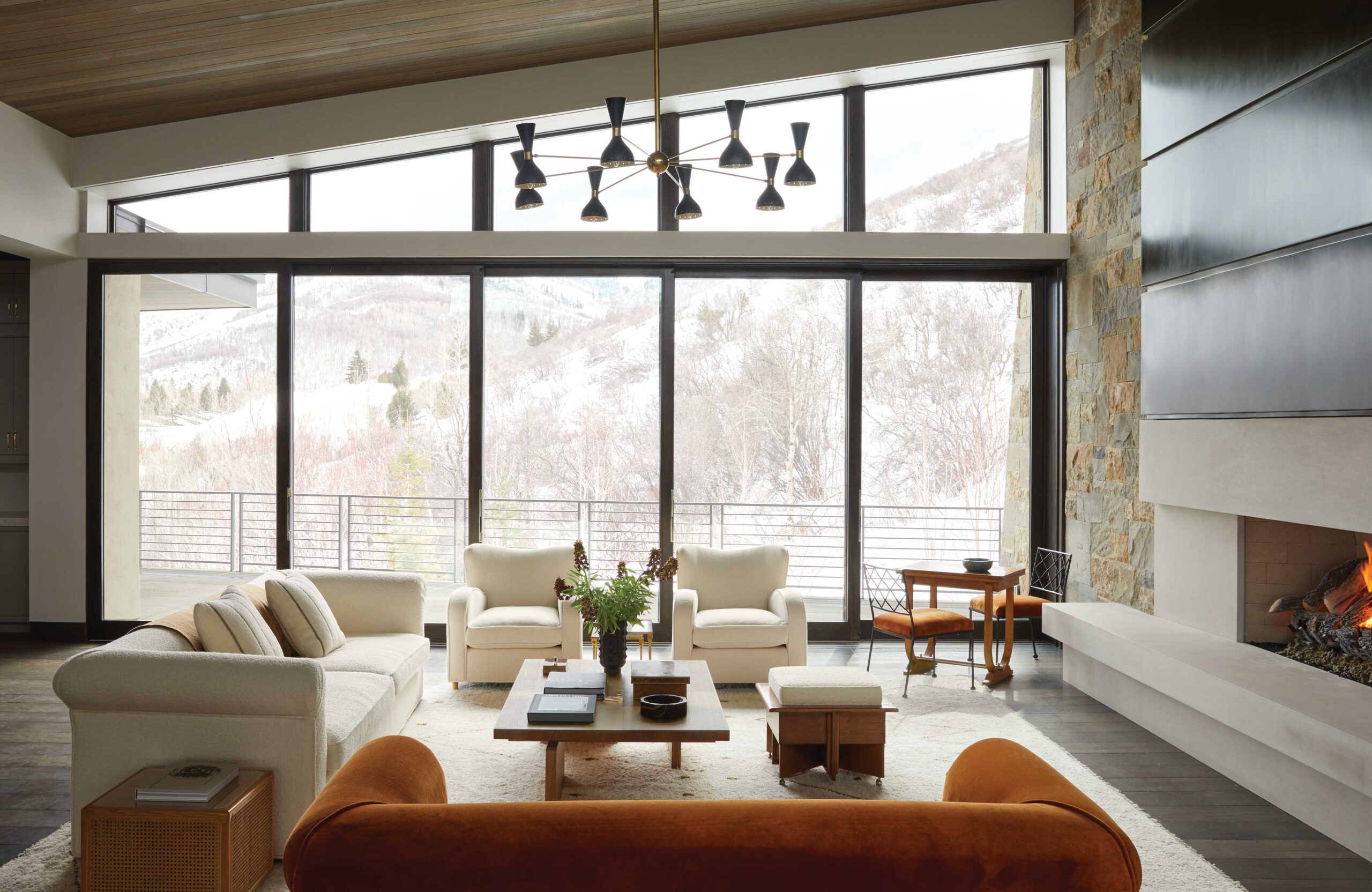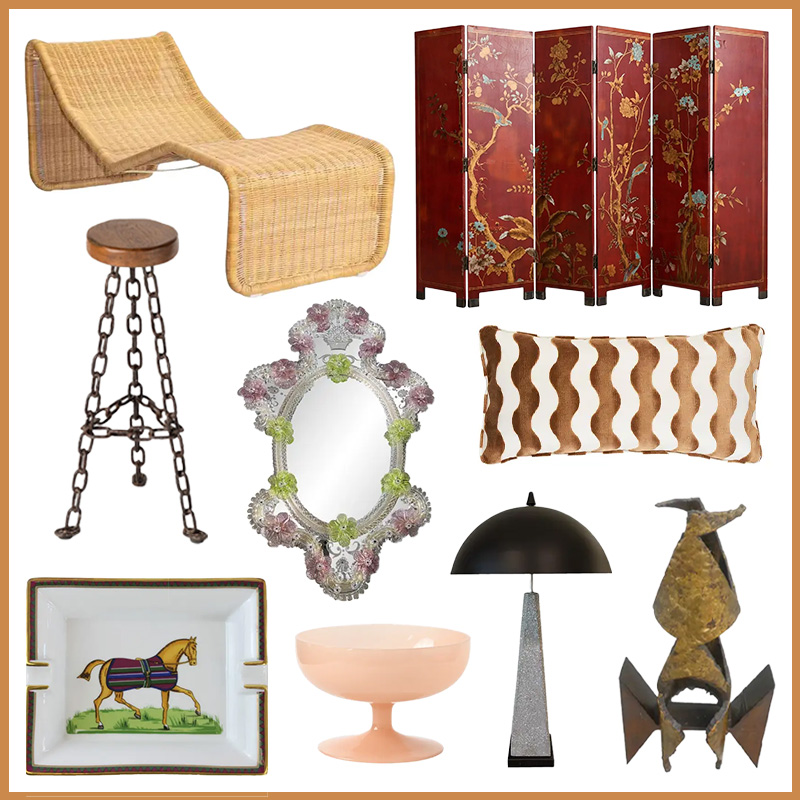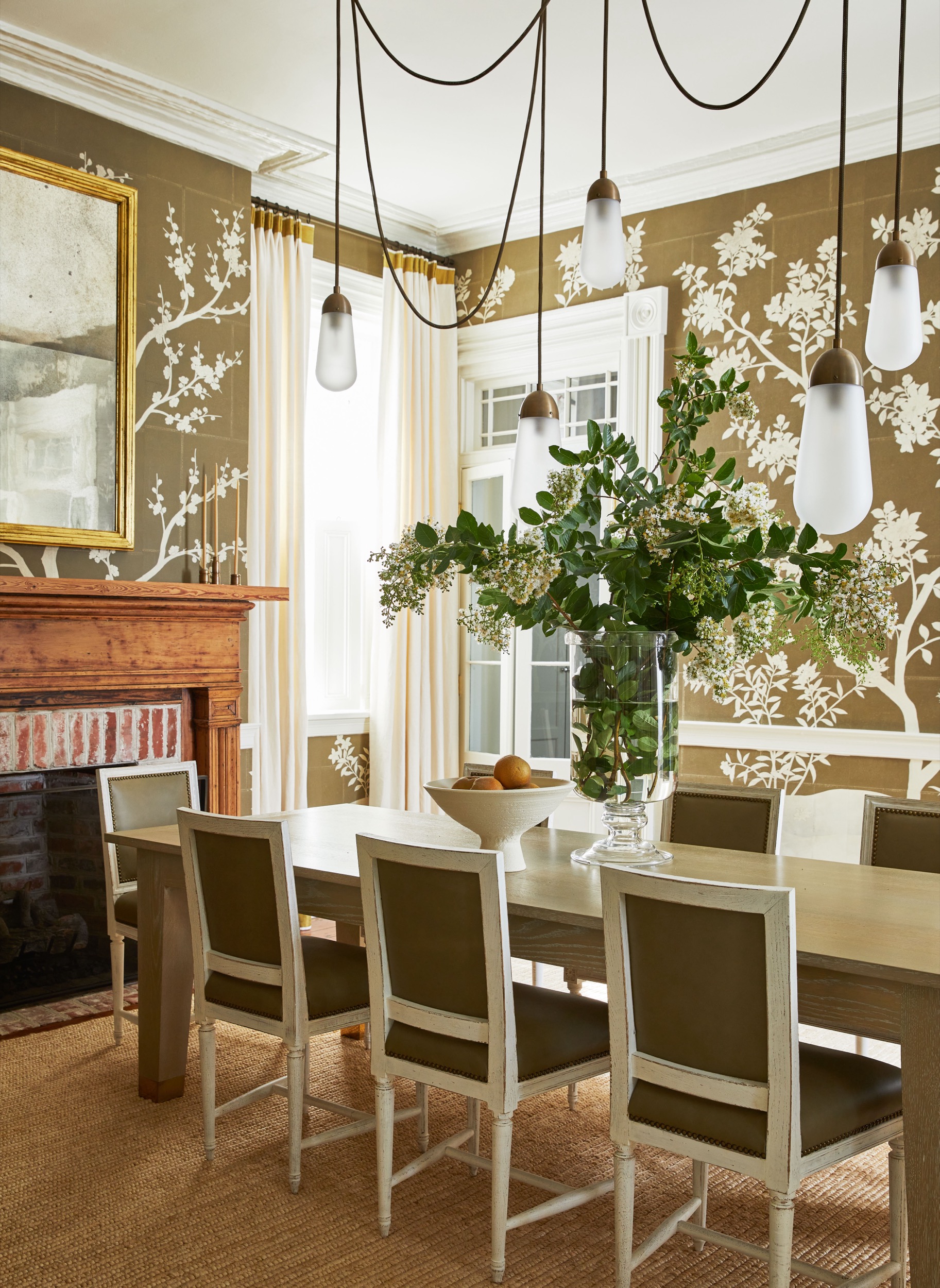In the summer of 2020, Eleanor Edelman started looking at houses for sale in Brooklyn—not because she was thinking of buying one, but because she didn’t have much else to do. During the lockdown, she had left London, where she’d lived for the past 10 years, and was now staying with her parents on Long Island; meanwhile, she had decided to take a temporary break from the blue-chip contemporary art advisory she cofounded, Edelman Mack. With plenty of time on her hands, she thought, why not go to a few open houses? But as she stepped into one particular 19th-century brownstone in the historic Clinton Hill neighborhood, something strange occurred. “I was overwhelmed by the feeling I had been there before,” she says. Walking through the high-ceilinged parlor and into a back dining room overlooking a peaceful garden, Edelman thought, “This is the most special place I’ve ever been—and I have to make it my own.”
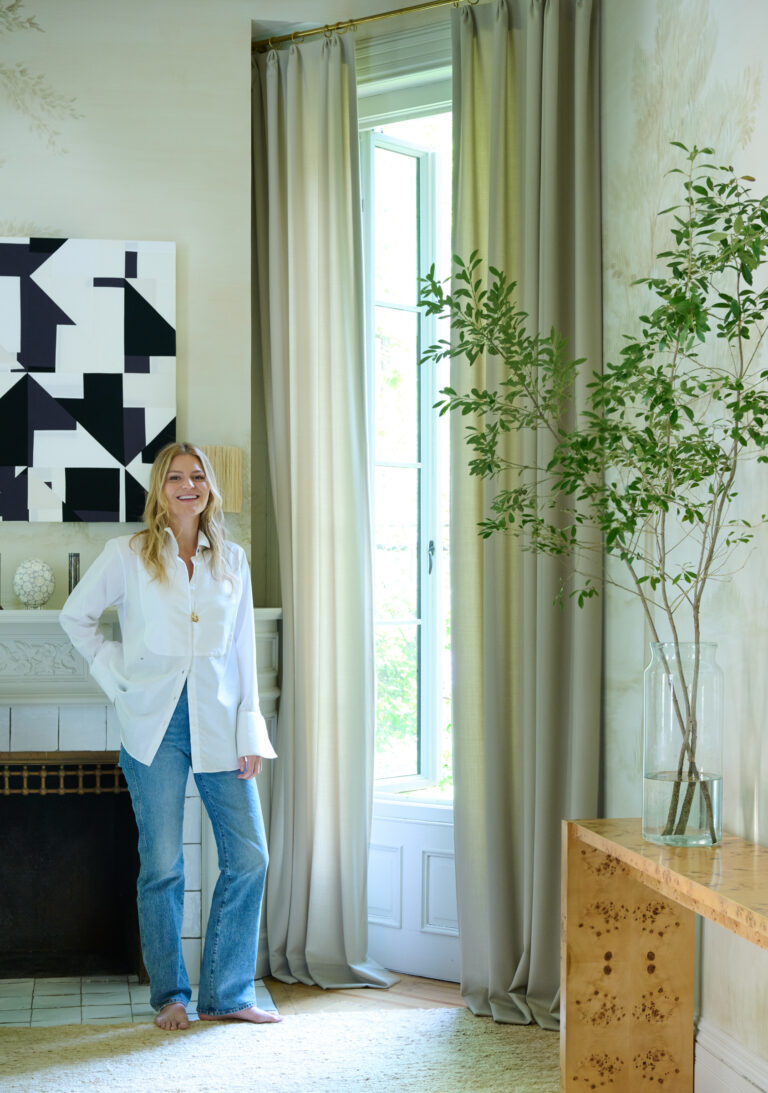
“My mother is an interior designer, so I grew up with somebody who was very aware of space and color and I learned a lot from her,” says Edelman, pictured.
William Waldron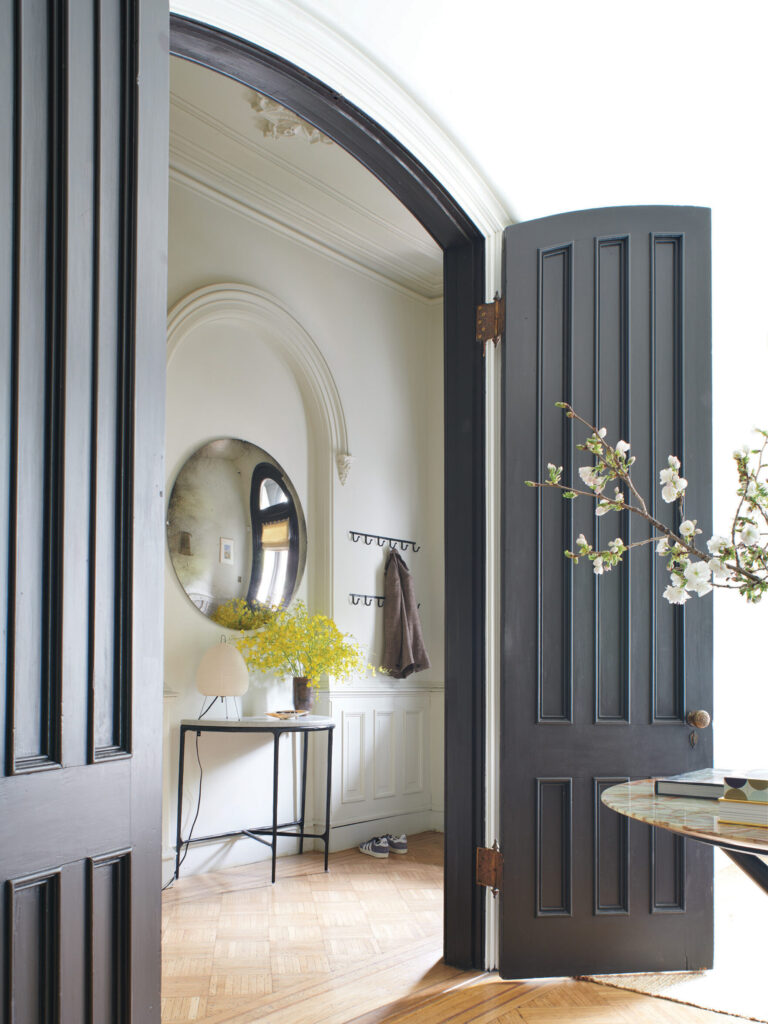
The entry to Edelman’s first rental apartment in London featured a convex mirror, which she later learned is believed to ward off evil spirits. “I’ve placed a large convex mirror at my entry ever since,” she says; this one is from the Convex Mirror Company.
William Waldron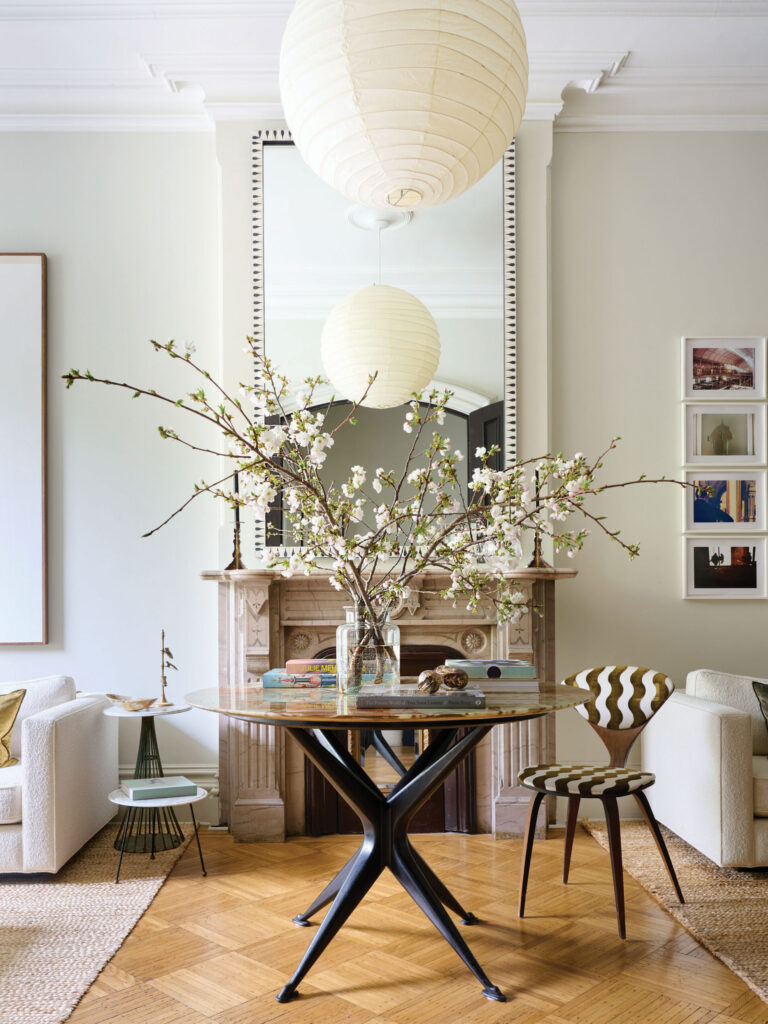
Edelman used a vintage onyx table she found while living in London to help create a visual division between the two seating areas of her Brooklyn brownstone’s parlor floor. The vintage Norman Cherner chair beside it is covered in The Wave Velvet by Miles Redd for Schumacher. A Noguchi paper lantern and tall CB2 mirror draw the eye up to the 13-foot ceiling.
William WaldronAnd so she did. Edelman quickly reached out to an interior designer that she had known all her life to help her decorate this space, her very first house. The designer, however, refused the commission—on the basis that she was also Edelman’s mother. “My mom was worried that if we had any disagreements, it would hurt our relationship,” Edelman recalls. Though initially disappointed by this turn of events, she now feels only gratitude. “It forced me to do it for myself, to make every decision,” she says. “Every color, every fabric was something I chose, as opposed to something that my mom chose for me. And as a result, every single thing in this house is something that I love.”
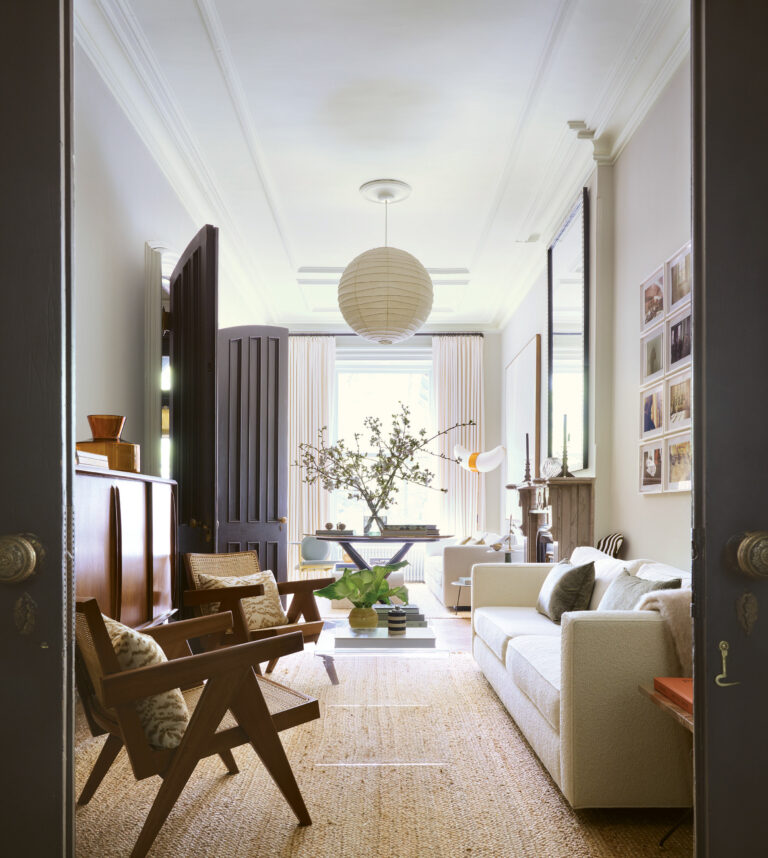
While the large midcentury rosewood sideboard “was not an obvious choice for the space,” she combined it with more delicate furniture and artwork to soften its presence and ended up thrilled with the result. The armchairs are by Phantom Hands, and the jute rug is Keno by Patterson Flynn.
William WaldronEdelman wanted each room to feel different—“like its own kind of artwork,” she says—but still in dialogue with one another, which presented a challenge in a house just over 17 feet wide. Instead of treating the long, narrow parlor floor (which, to Edelman, felt like a “railroad track”) as one unit, she divided it into two separate seating areas. A lighter, quieter space at the front of the house functions as the go-to spot for reading, relaxing, and watching TV when it’s just Edelman and her boyfriend at home, while the cozier, more colorful space deeper into the house works as an entertaining hub, offering guests a place for cocktails, games, and chatting with Edelman as she fixes dinner in the adjacent kitchen.
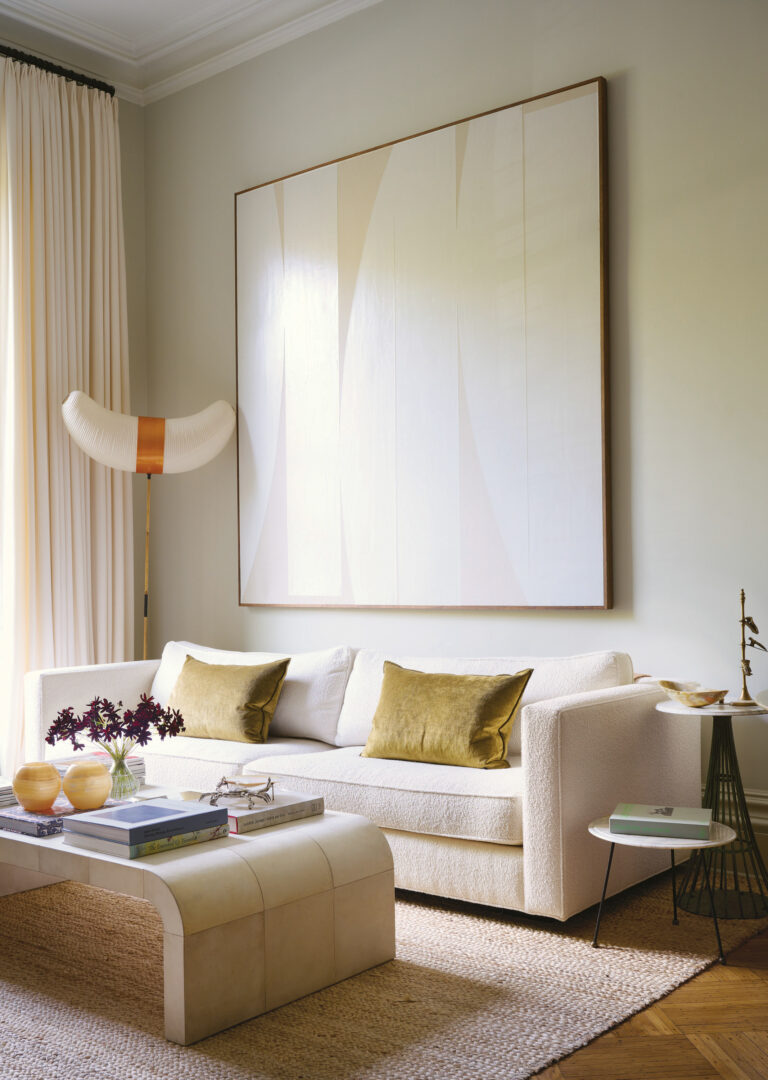
In a quiet sitting area, Edelman took her cues from a Johnny Abrahams painting, opting for a pale palette and a variety of subtle organic textures, including an RH parchment coffee table and Patterson Flynn’s Keno rug.
William Waldron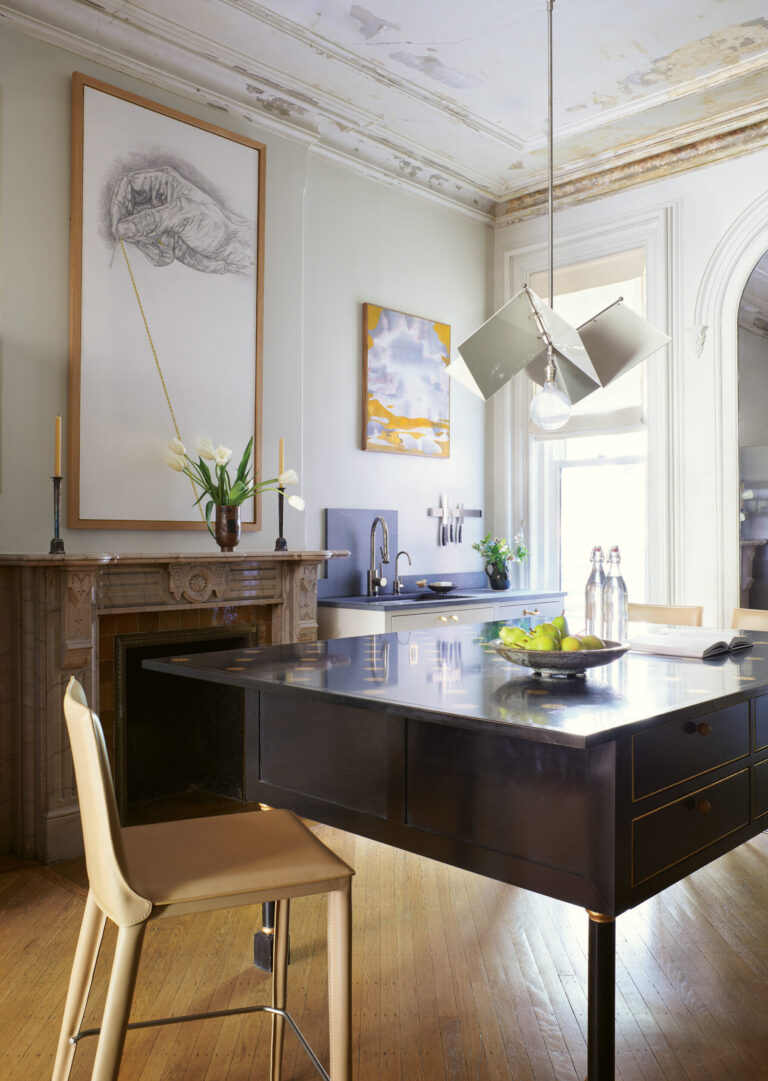
In the kitchen, Edelman kept the custom lacquered island designed and installed by the house’s previous owner, designer Michelle R. Smith; its black-and-gold palette is mirrored in a pair of paintings by Lily Lewis (left) and Colm Mac Athlaoich that hang behind it.
William WaldronUnlike many of its neighbors, the 1878 Neo-Grec house—which Edelman calls a “very personality-heavy space”— has retained plenty of its original architectural characteristics, including 13-foot-high parlor ceilings, huge arched doorways, and filigreed doorknobs and hinges. Edelman is enamored of the craftsmanship evident in these details, like the living area’s original parquet floors, crafted with matchstick-thin detailing. “Over the past century, the nailheads that hold the wood in place have ‘bled’, leaving stains throughout. It’s a unique part of the house that I treasure,” she enthuses.
In order for these flourishes to peacefully coexist with her enviable collection of 20th- and 21st-century art and furniture, Edelman kept the palette neutral and the layout spare, creating breathing space to admire both the dramatic curve of a doorway and the impact of a modern abstract painting. “Ultimately, I think the key was not overthinking it,” she says. “In my work, I’m often playing with the idea of new and old, sometimes mixing a client’s old master oil painting with something minimal and contemporary, so I was totally comfortable throwing midcentury American furniture in front of an 1890 marble mantelpiece.”
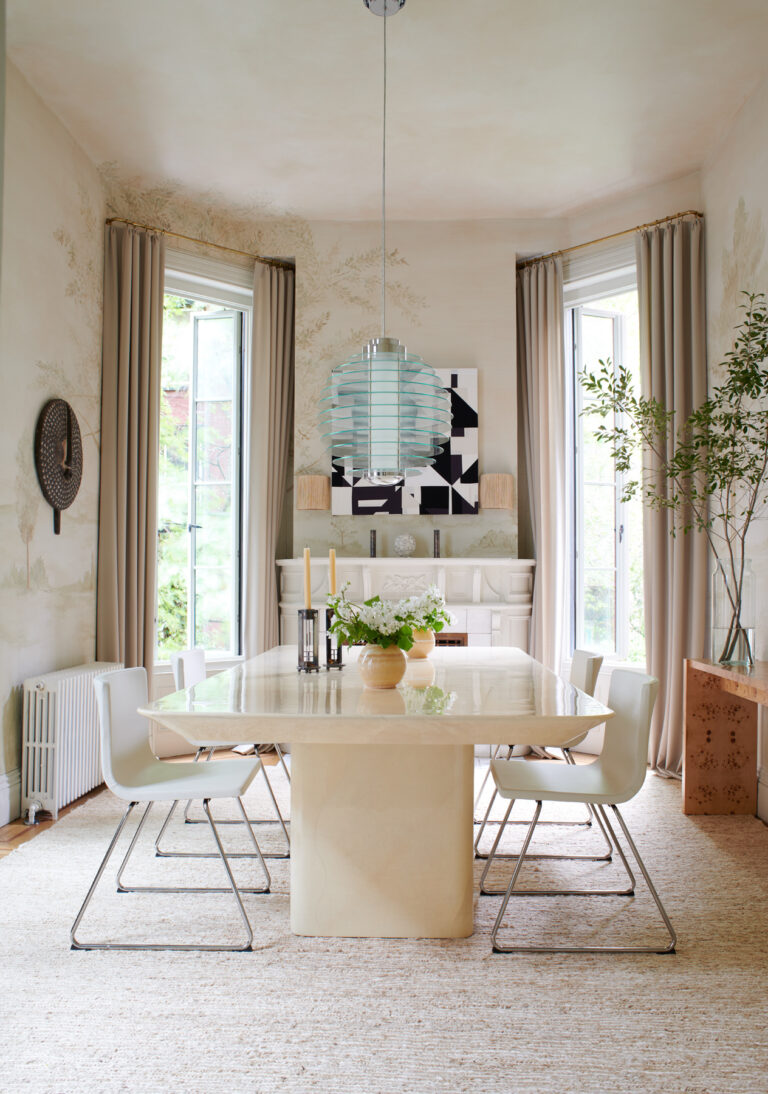
Drawing inspiration from the English countryside and the trees just outside the windows, decorative artist James Mobley transformed the dining room into a dreamy, misty green-gray retreat. The parchment dining table is vintage, with simple white chairs from Ikea.
William WaldronEvery single piece in my house is something that I feel extremely personally, emotionally connected to.
ELEANOR EDELMAN
As someone who spends her work life surrounded by art— her newest project, Studio Edelman, specializes in both art and interior design—Edelman is often asked how she chooses what she collects and displays in her own home. “There are lots of works of art that I’ve worked on over the years that I have been impressed by, or thought were significant, or felt were important as part of somebody else’s collection. But every single piece in my house is something that I feel extremely personally, emotionally connected to,” she says. Among her favorites: a Medusa-inspired watercolor by Giulia Andreani that hangs in her bedroom, which Edelman loves for its beauty, for its subject matter (she has a particular interest in Greek mythology), for the fact that it is a female nude by a female artist, and for the way Andreani takes on a weighty subject with watercolor, which is often dismissed a less-than- serious medium. (Edelman makes a point of collecting work by young female artists because she thinks “female painters are phenomenal,” she says, and also as a corrective to “the asymmetry that’s existed in the art market for hundreds of years.”)
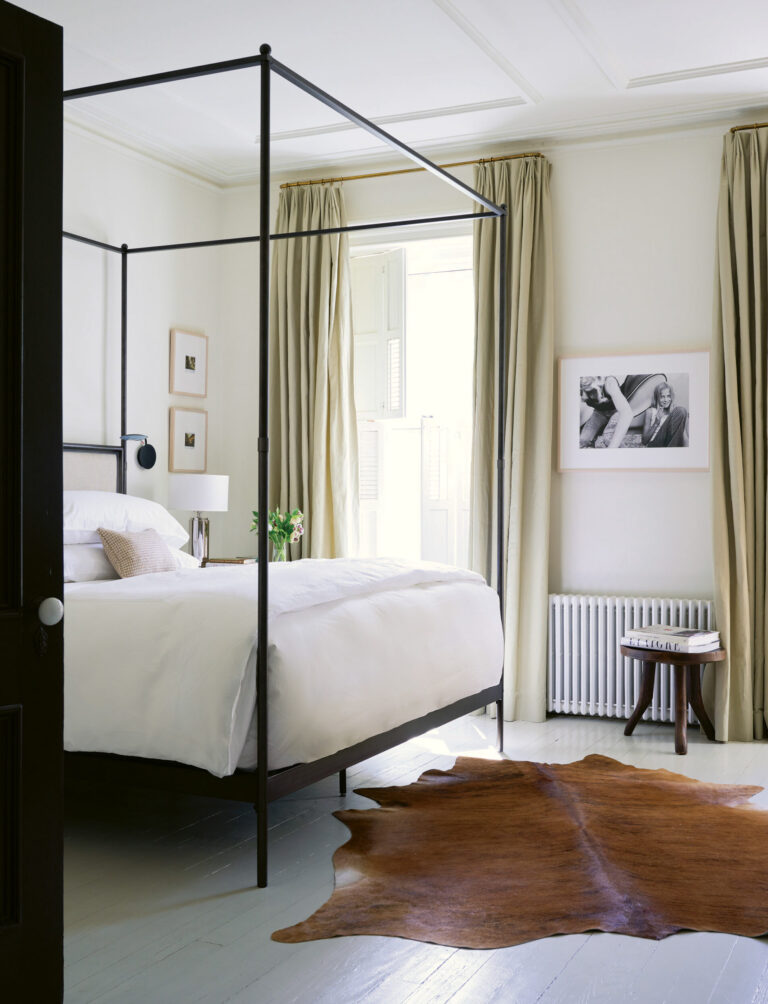
Inspired by the ease, simplicity, and elegance of country houses in the south of France, Edelman decided to paint the floor in Farrow & Ball’s Pointing, a warm white; the cowhide rug is from Overland.
William Waldron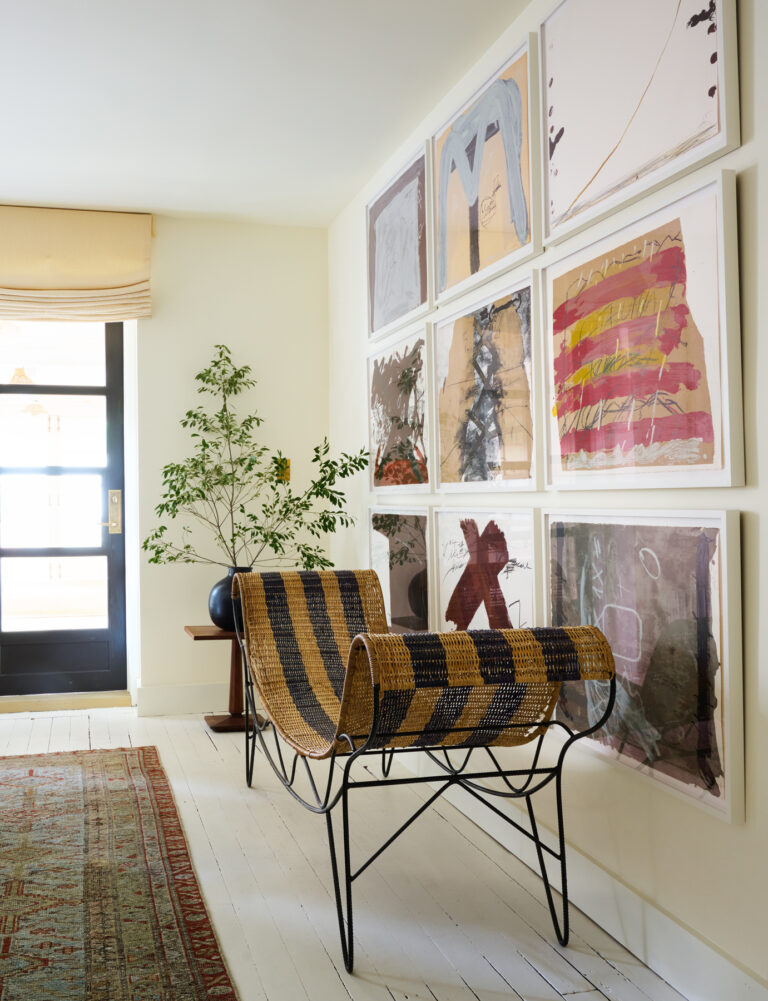
The media room “is definitely the party room,” says Edelman, who embraced natural textures—a Marni Marketplace bench, a vintage rug from Frances Loom—to complement a set of works by Antoni Tapies.
William Waldron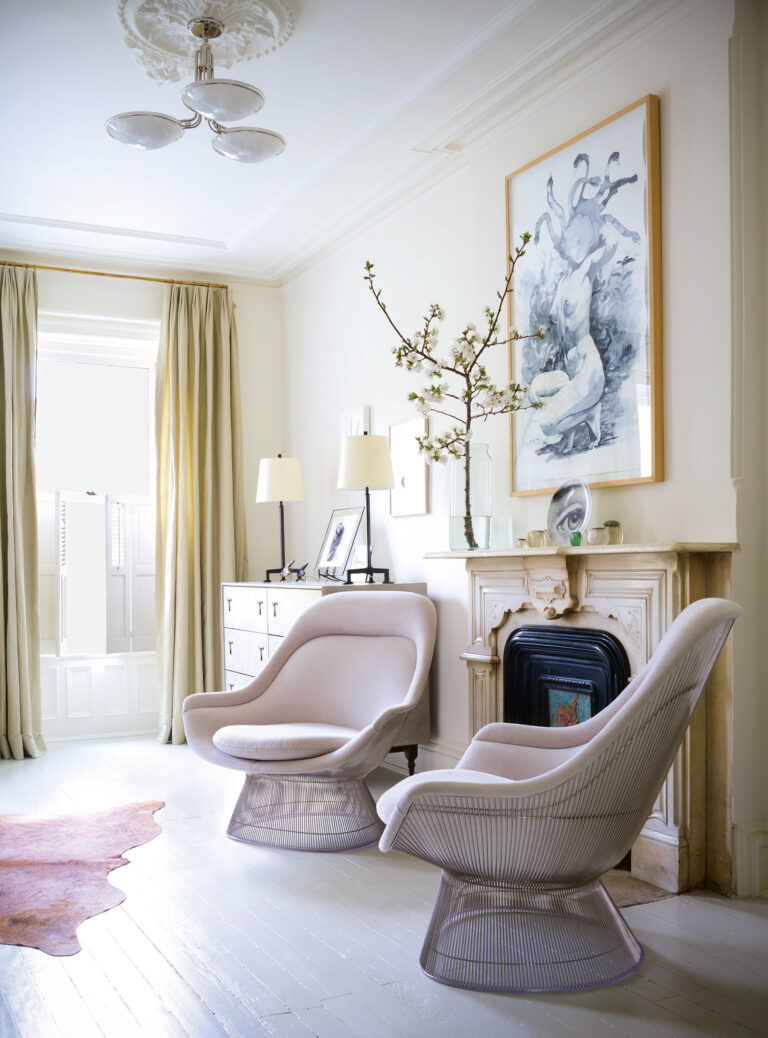
A pair of Warren Platner chairs, flanking the original marble mantel, brings contemporary energy into the primary bedroom. The painting by Giulia Andreani, "Medusa ou avec une fille à poil tu peux le faire à 100 de plus," is a particular favorite. Dresser, BDDW; buffet lamps, Thomas O’Brien for Visual Comfort.
She is also especially partial to a quasi-figurative painting by Daniel Crews-Chubb in her living area. Featuring imagery from Yoruban and Finnish mythology, it is a wild, messy, rough-around-the-edges painting that, she admits, isn’t her usual cup of tea. “I love simple beauty— uncomplicated things that everybody finds beautiful,” she explains, “and so when I find something that’s got a little bit of ugliness to it that I really love, it’s that much more special to me.”
In her own home, Edelman feels she absolutely fits. “Everything from the moldings and proportions to the flow of the space are definitively my style,” she says. She adores the place’s quirks, finding it “sexy and romantic” that in order to reach the second-floor terrace, guests have to go through her bedroom and bath, then climb through a window. Having grown up in Manhattan, where looking out her bedroom window meant looking into somebody else’s, being on a quiet block surrounded by trees feels practically like country living. “I travel a lot for work, and every time I open the front door after a long flight, I am overwhelmed by a sense of home,” she says. “This is the home I envisioned for myself as a girl, and I feel so lucky to have found it and had the opportunity to make it my own.”
THIS ARTICLE ORIGINALLY APPEARED IN VOLUME 14 OF FREDERIC MAGAZINE. CLICK HERE TO SUBSCRIBE!
